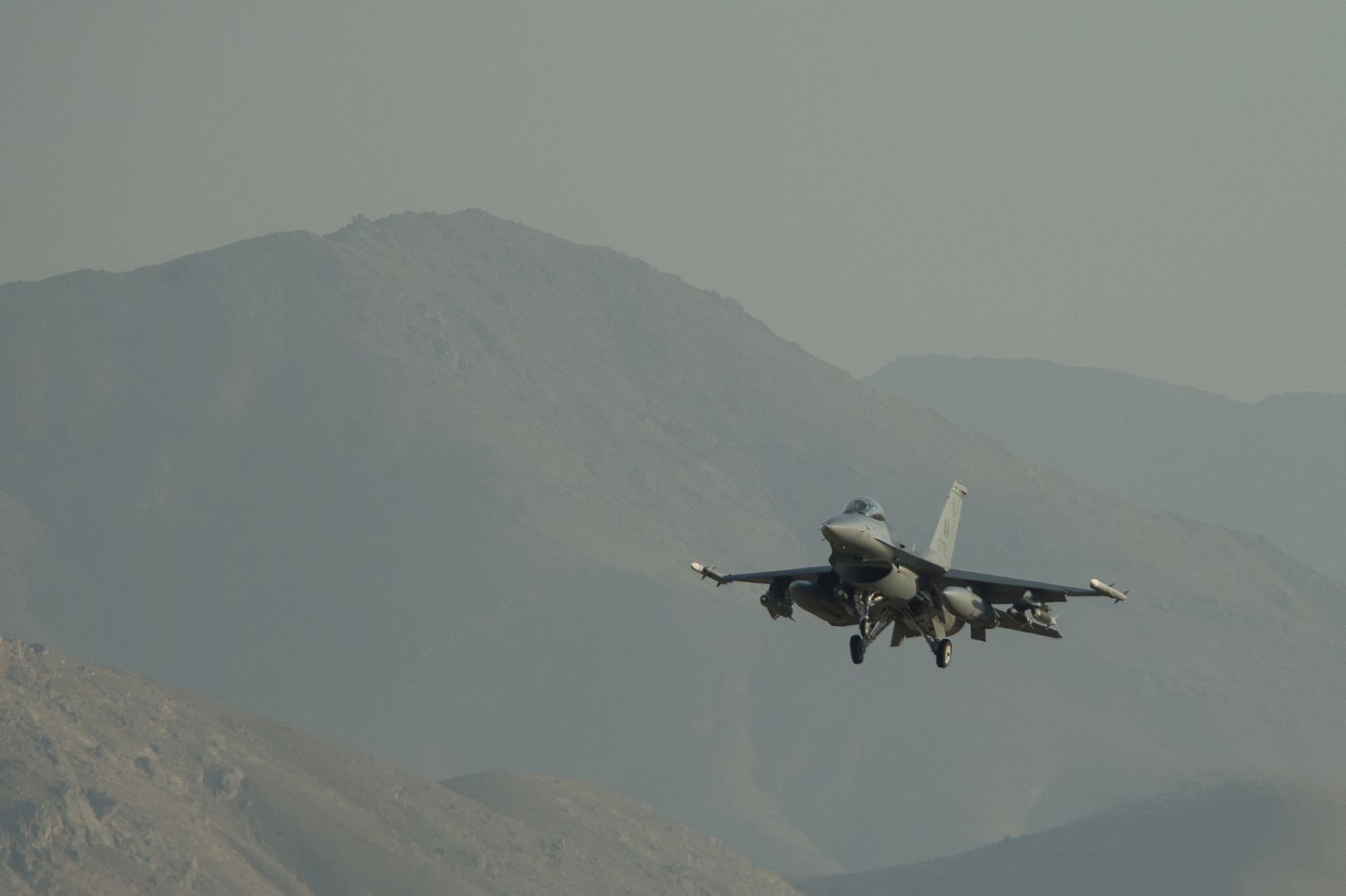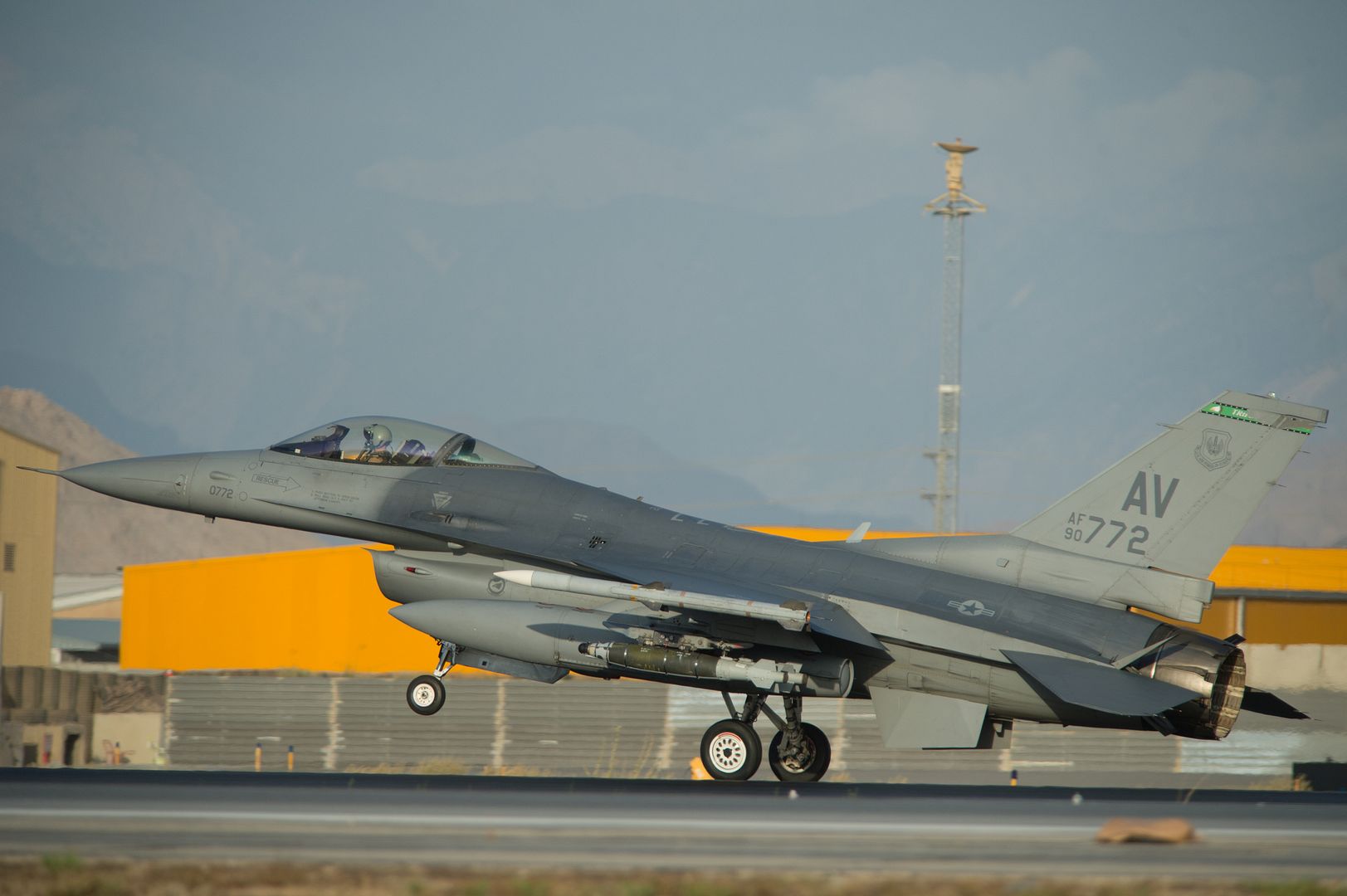Forums
- Forums
- Axis And Allies Forum
- General Discussion
- Aviation News
Aviation News
Post a reply
- Go to Next topic
- Go to Welcome
- Go to Introduce Yourself
- Go to General Discussion
- Go to Screenshots, Images and Videos
- Go to Off topic
- Go to Works in Progress
- Go to Skinning Tips / Tutorials
- Go to Skin Requests
- Go to IJAAF Library
- Go to Luftwaffe Library
- Go to RAF Library
- Go to USAAF / USN Library
- Go to Misc Library
- Go to The Ops Room
- Go to Made in Germany
- Go to Campaigns and Missions
- Go to Works in Progress
- Go to Juri's Air-Raid Shelter
- Go to Campaigns and Missions
- Go to Works in Progress
- Go to Skinpacks
- Go to External Projects Discussion
- Go to Books & Resources
-
10 years agoFri Jul 24 2015, 02:20pm
 Main AdminJuly 23, 2015
Main AdminJuly 23, 2015
Turkey says its warplanes have carried out airstrikes against "Islamic State" targets across the border in Syria. This comes a day after a Turkish soldier was killed in a cross-border firefight with the extremist group.
The airstrikes, carried out by Turkish F-16 fighter jets, struck three "Islamic State" ("IS") targets close to Turkey's border with Syria early on Friday, a statement from Prime Minister Ahmet Davutoglu's office said.
An earlier report from state-run TRT television that said the attacks were launched by four planes that took off from Diyarbakir air base in south-eastern Turkey.
TRT said the airstrikes hit "IS" targets in the Syrian village of Havar, which is across the border from the Turkish province of Kilis. The planes did not violate Syrian airspace, according to TRT.
The bombing raid was the first of its kind against the "IS" militants in Syria.
Washington has long been urging Ankara to participate more actively in efforts to combat "IS," which controls large areas of both Syria and Iraq. US-led coalitions are carrying out airstrikes in both countries in a bid to wipe out the group.
Retaliatory attacks
According to the newspaper "Hurriyet," the attacks were in retaliation for the death of a Turkish soldier who was killed on Thursday when five "IS" militants shot at a Turkish military outpost from Syrian territory. One militant was also killed in the ensuing firefight.
Friday's operation also comes a day after an announcement that Turkey had agreed to allow the United States to use the key air base of Incirlik to launch aerial attacks against the jihadist extremists.
Earlier in the week, a suicide bomb attack that has been blamed on "IS" militants killed more than 30 people in south-eastern Turkey near the Syrian border. Turkish officials say they fear that attack was an act of retaliation for Turkey's recent crackdown on 'IS" militants within its own borders, which has seen more than 500 suspected collaborators detained.
As part of the ongoing operation to combat militants, Turkish police backed up by helicopters on Friday launched raids on locations harboring suspected "IS" and Kurdish extremists in Istanbul, according to the official Anatolia news agency. The number of those detained was not immediately clear.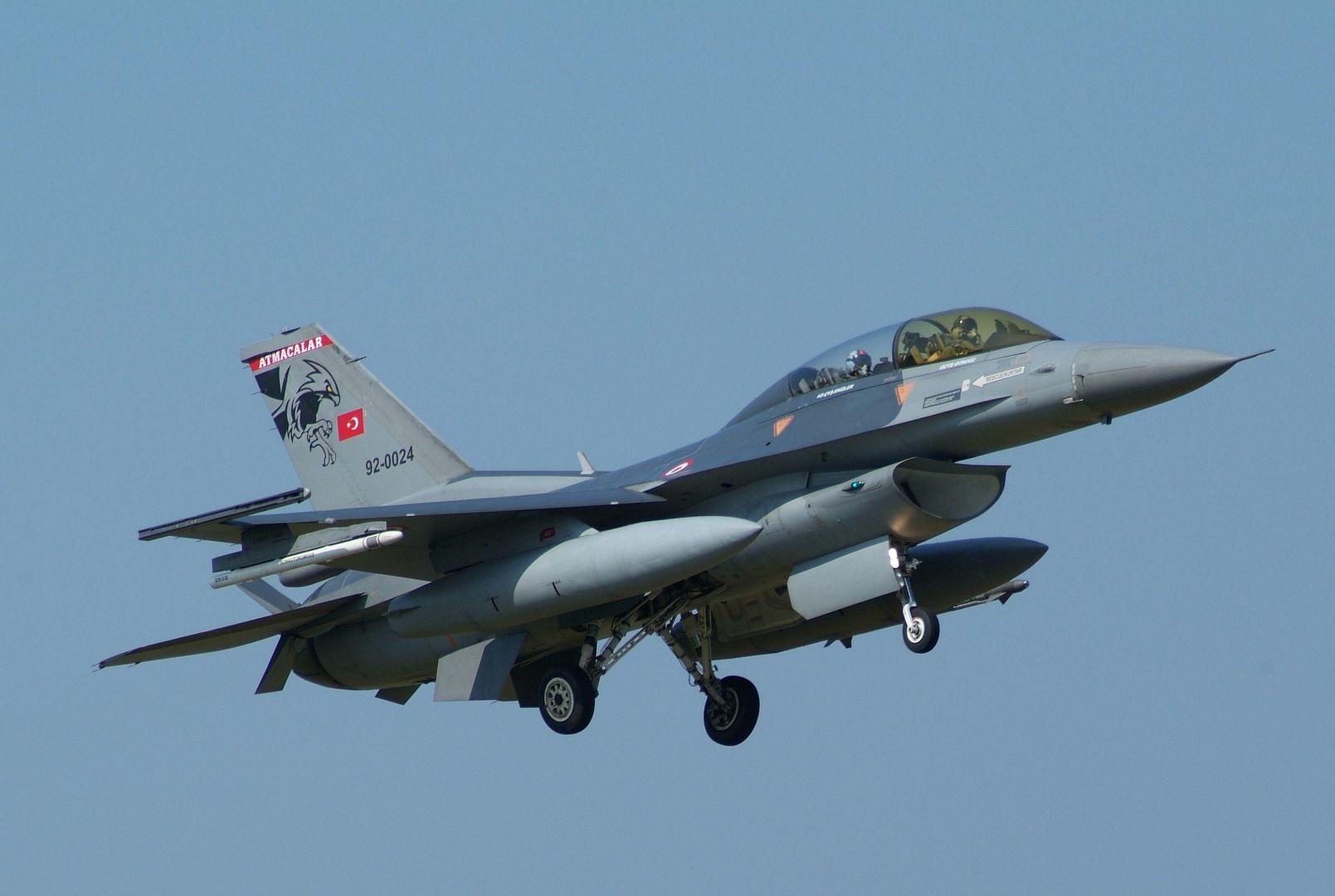
CAPE CANAVERAL, Fla., July 23, 2015 ? Boeing?s [NYSE: BA] seventh Wideband Global SATCOM (WGS) satellite is now in orbit and will soon provide the U.S. and allied militaries with 17 percent more secure communications bandwidth than its predecessors thanks to a payload upgrade.
?Every WGS that we deliver increases the ability of U.S. and allied forces to reliably transmit vital information,? said Dan Hart, Boeing vice president, Government Space Systems. ?By utilizing commercial processes, we are able to offer greater capacity at a lower spacecraft cost, resulting in more than $150 million in savings for WGS-7 through WGS-10.?
WGS-7 sent its first successful signals soon after being launched Wednesday on a United Launch Alliance Delta IV rocket. The next three WGS satellites will incorporate Boeing?s advanced digital payload design, which doubles payload bandwidth and further improves connectivity. WGS-8 is scheduled for launch in late 2016. Boeing will deliver a total of 10 WGS satellites to the U.S. Air Force.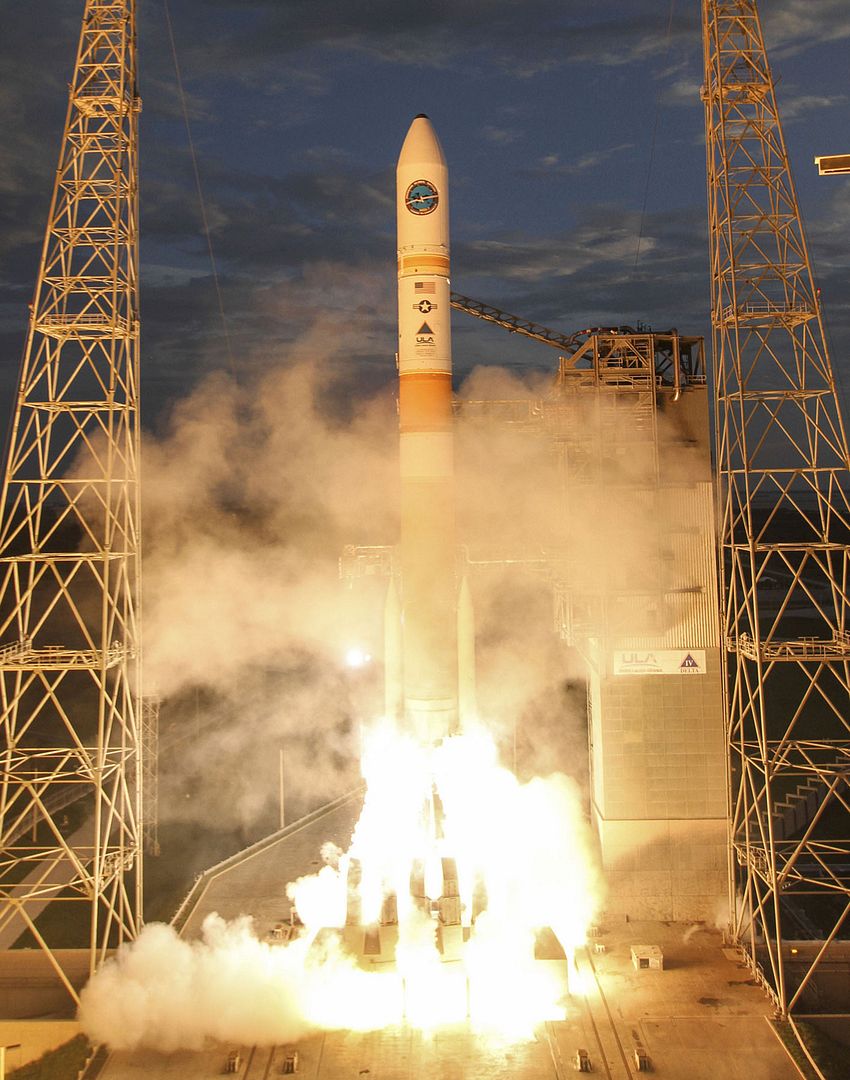
July 23, 2015
Officials from the German government, Lockheed Martin, and Airbus Defense and Space GmbH signed a contract in ceremonies in Koblenz, Germany, on 22 July 2015 for the upgrade of the German Navy P-3C Orion maritime patrol aircraft fleet.
The contract includes production of eight Mid-Life Upgrade, or MLU, kits (outer wing, center fuselage, and horizontal stabilizer) by Lockheed Martin, primarily in Marietta, Georgia, as well as at other locations in the US.
The first delivery is scheduled for November 2016.
Airbus DS will be responsible for installation of the MLU kits on the German P-3Cs at its Manching, Germany, site.
Aircrews from Norway, US Customs and Border Protection, Canada, Taiwan, and the US Navy are now flying P-3s that have received the MLU kits.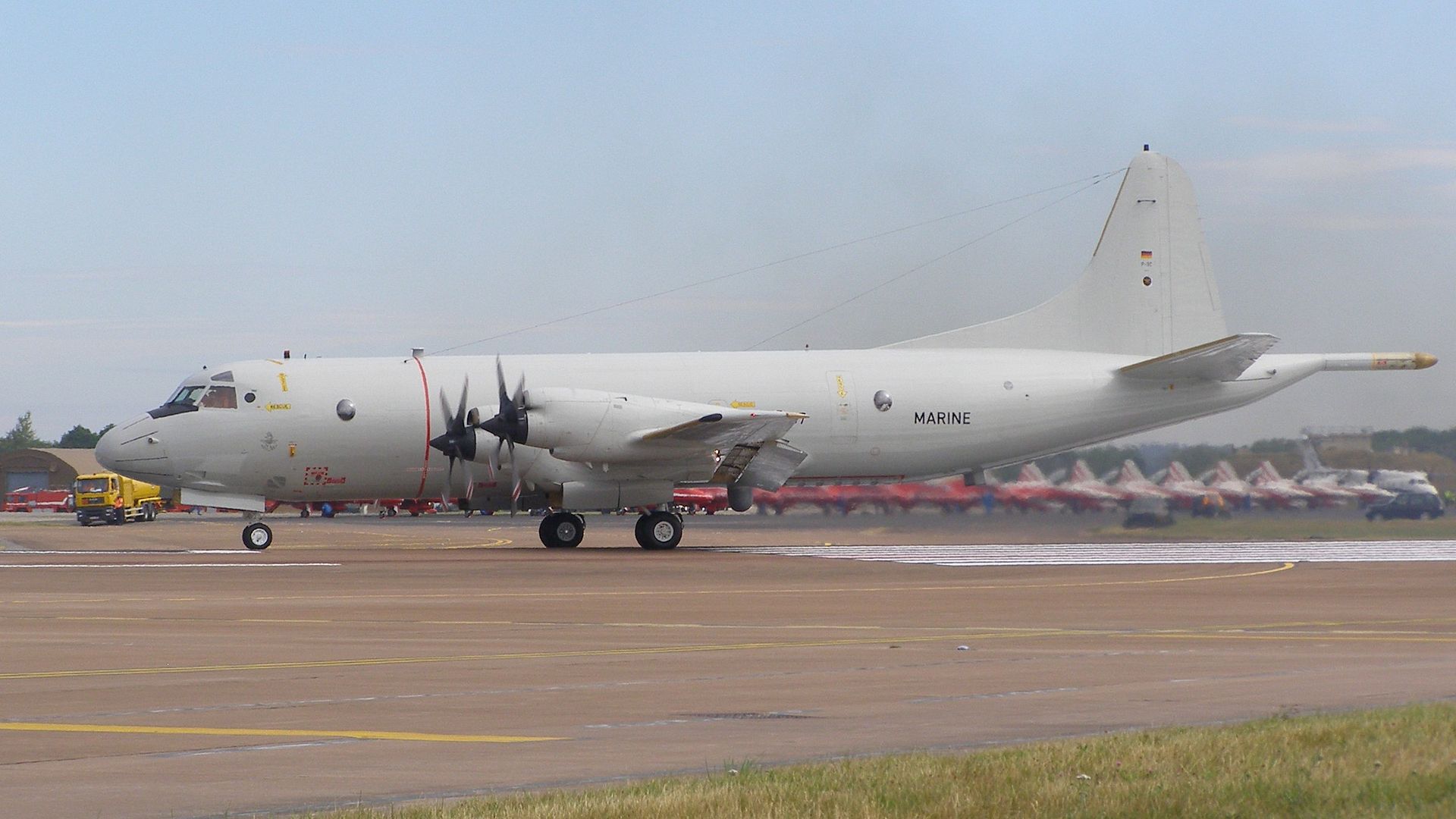
Just down the hill
The Thunderbirds Delta Formation flies over Niagara Falls, N.Y., July 20, 2015. (U.S. Air Force Photo by Senior Airman Jason Couillard)
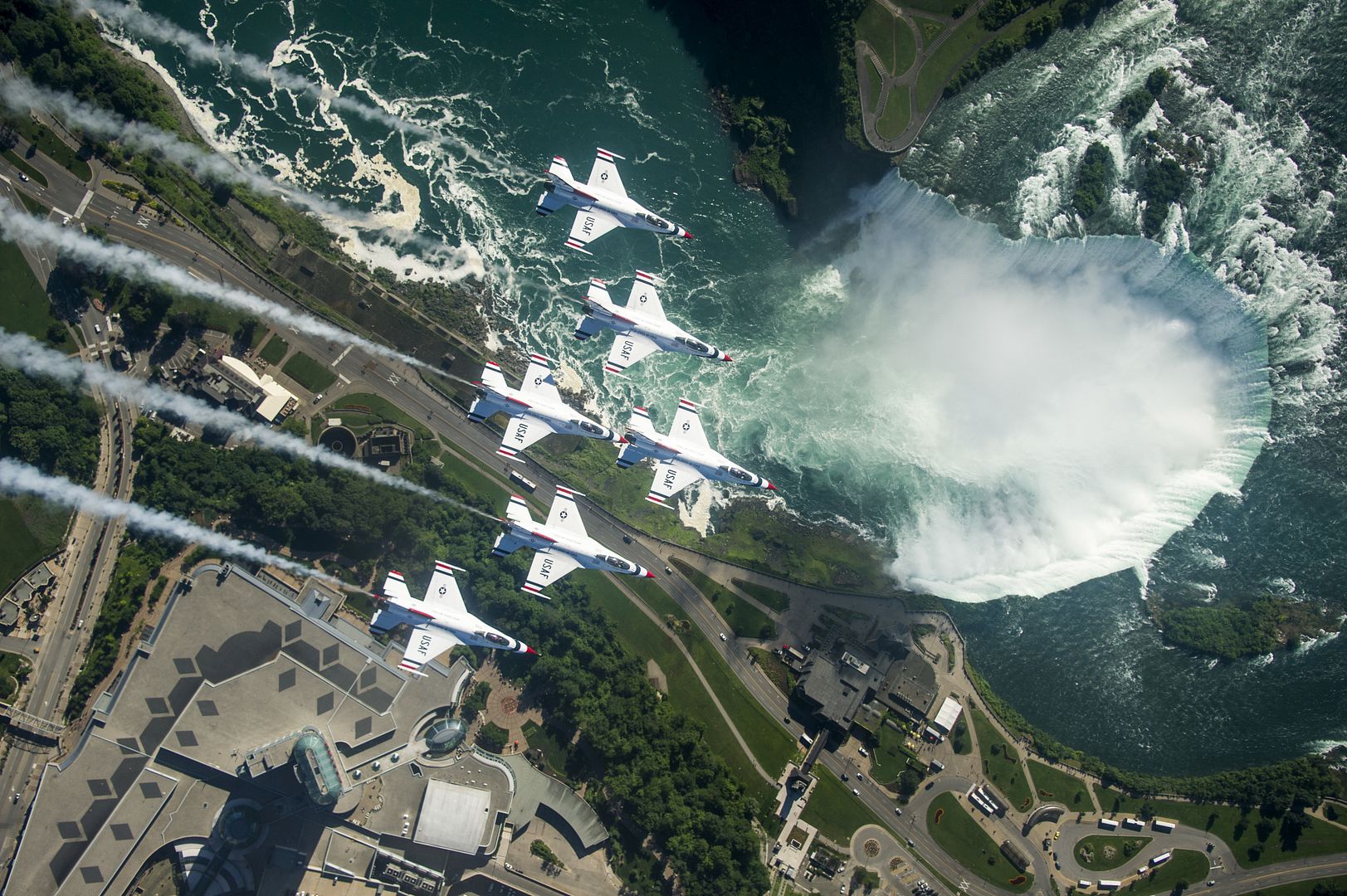
-
10 years ago
 Main AdminA B-52H Stratofortress assigned to the 69th Bomb Squadron, Minot Air Force Base, N.D., sits through pre-flight checks during Red Flag 15-3 at Nellis Air Force Base, Nev. July 15, 2015. The B-52 has a wide array of weapons at its disposal to dispose of an enemy and is capable of delivering approximately 70,000 pounds of munitions. (U.S. Air Force photo by Senior Airman Thomas Spangler)
Main AdminA B-52H Stratofortress assigned to the 69th Bomb Squadron, Minot Air Force Base, N.D., sits through pre-flight checks during Red Flag 15-3 at Nellis Air Force Base, Nev. July 15, 2015. The B-52 has a wide array of weapons at its disposal to dispose of an enemy and is capable of delivering approximately 70,000 pounds of munitions. (U.S. Air Force photo by Senior Airman Thomas Spangler)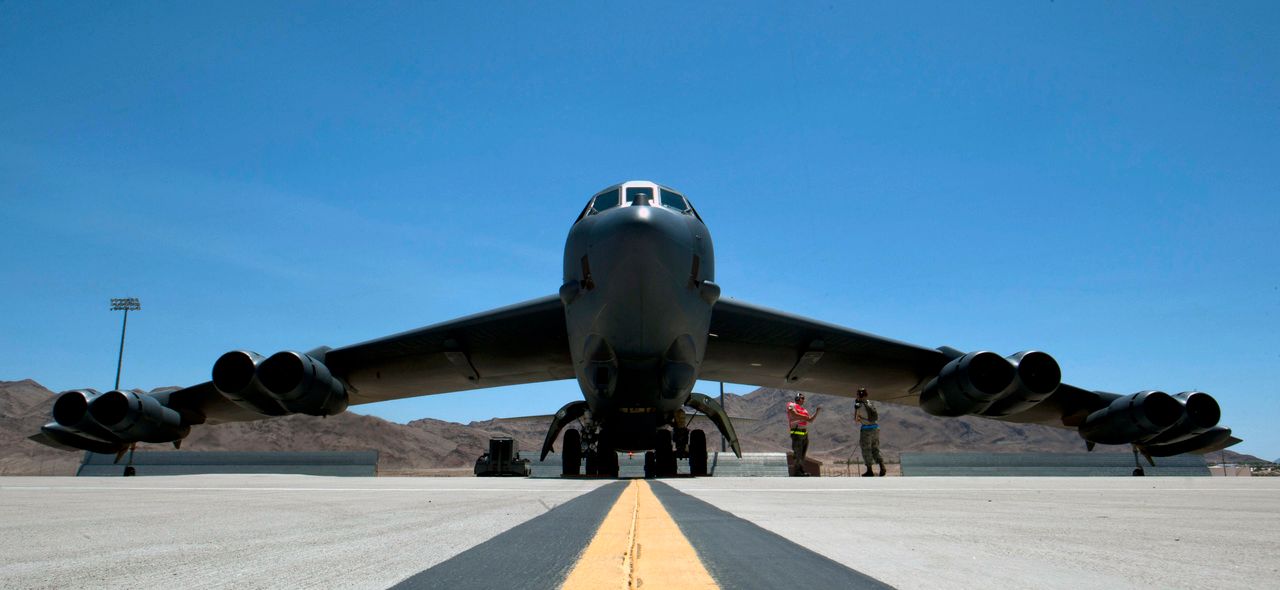
A B-52H Stratofortress assigned to the 69th Bomb Squadron, Minot Air Force Base, N.D., taxis for take off during Red Flag 15-3 at Nellis Air Force Base, Nev., July 15, 2015. The B-52 is a long-range heavy bomber capable of dropping or launching a wide variety of munitions on any target anywhere in the world. (U.S. Air Force photo by Airman 1st Class Rachel Loftis)
7/22/2015 - SPANGDAHLEM AIR BASE, Germany -- Members of the 354th Expeditionary Fighter Squadron and 321st Special Tactics Squadron traveled to Nowe Miasto, Poland, to perform specialized training July 20-23, 2015.
During the day and night, 354th EFS A-10 Thunderbolt II aircraft pilots performed unimproved surface landings on an austere landing strip, set up by 321st STS combat controllers, to simulate conditions of a deployed environment.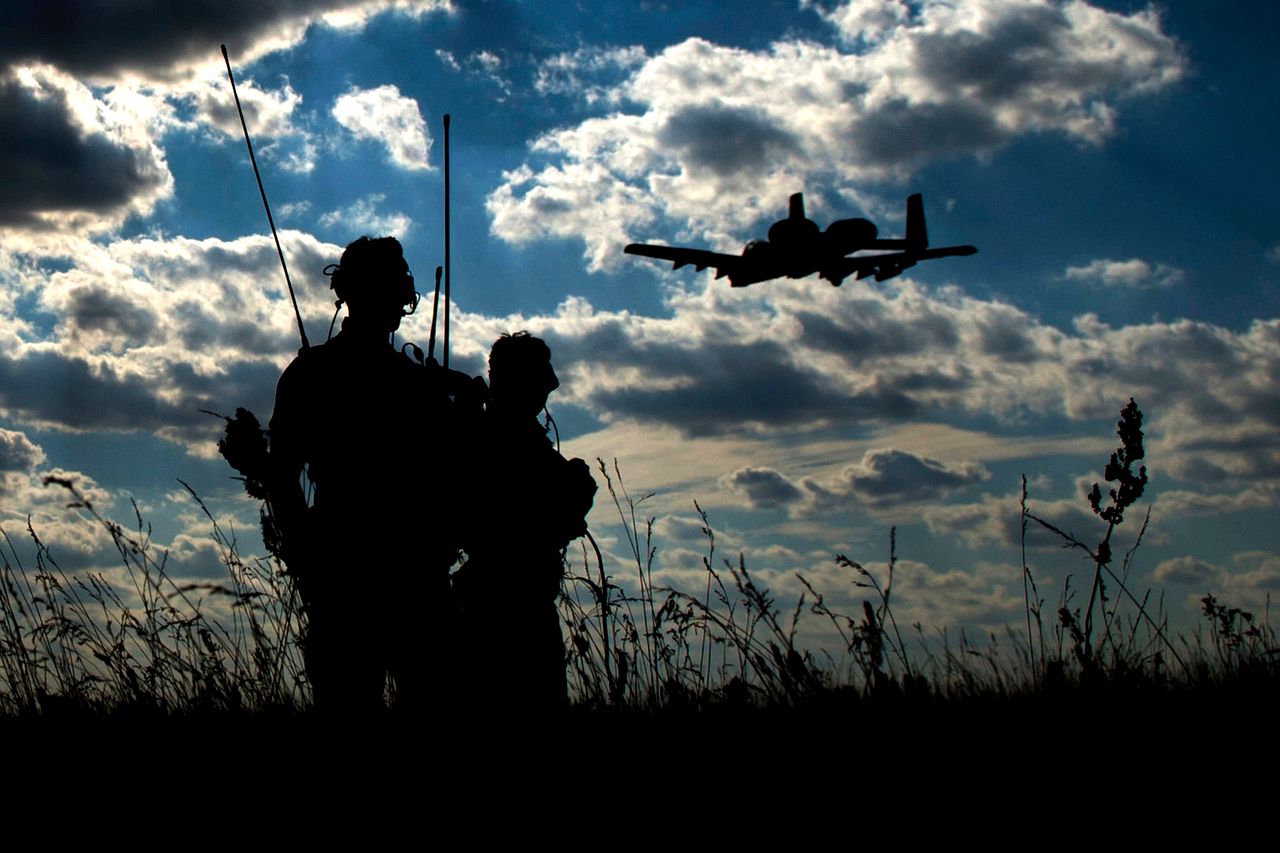
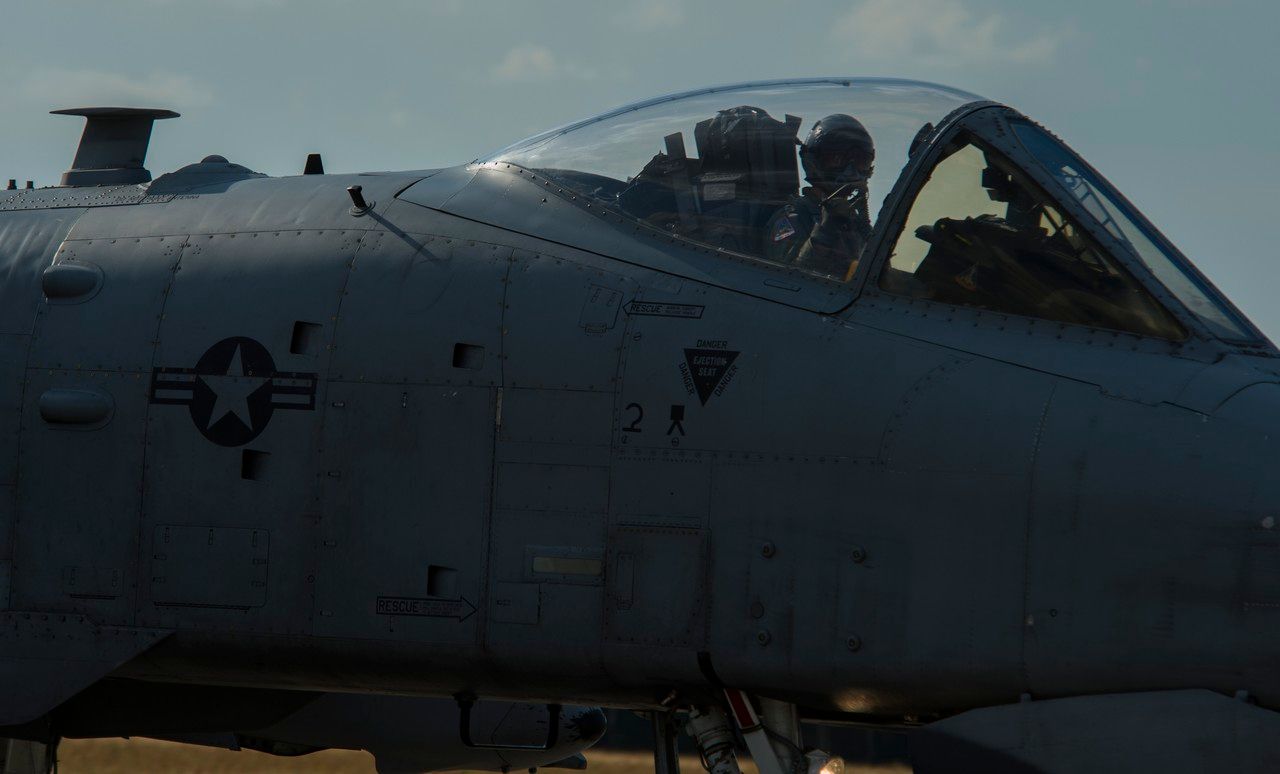

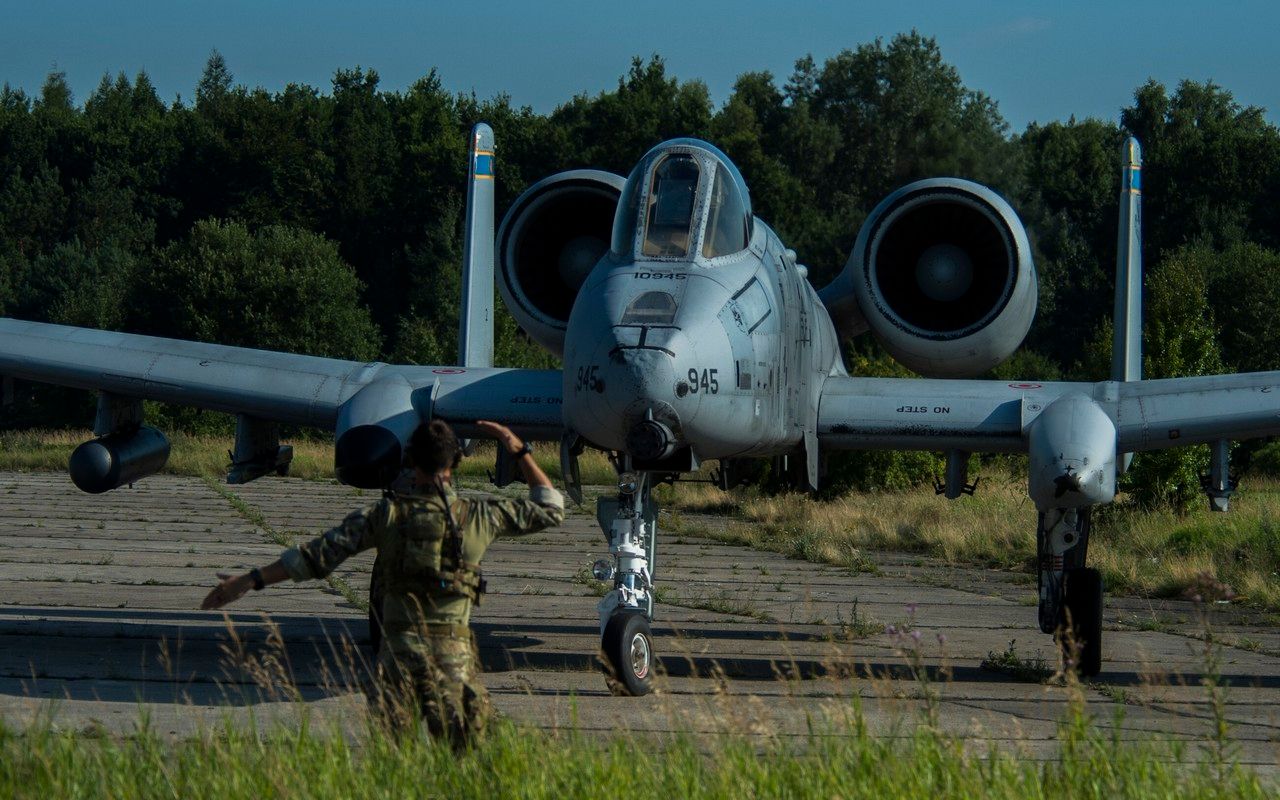
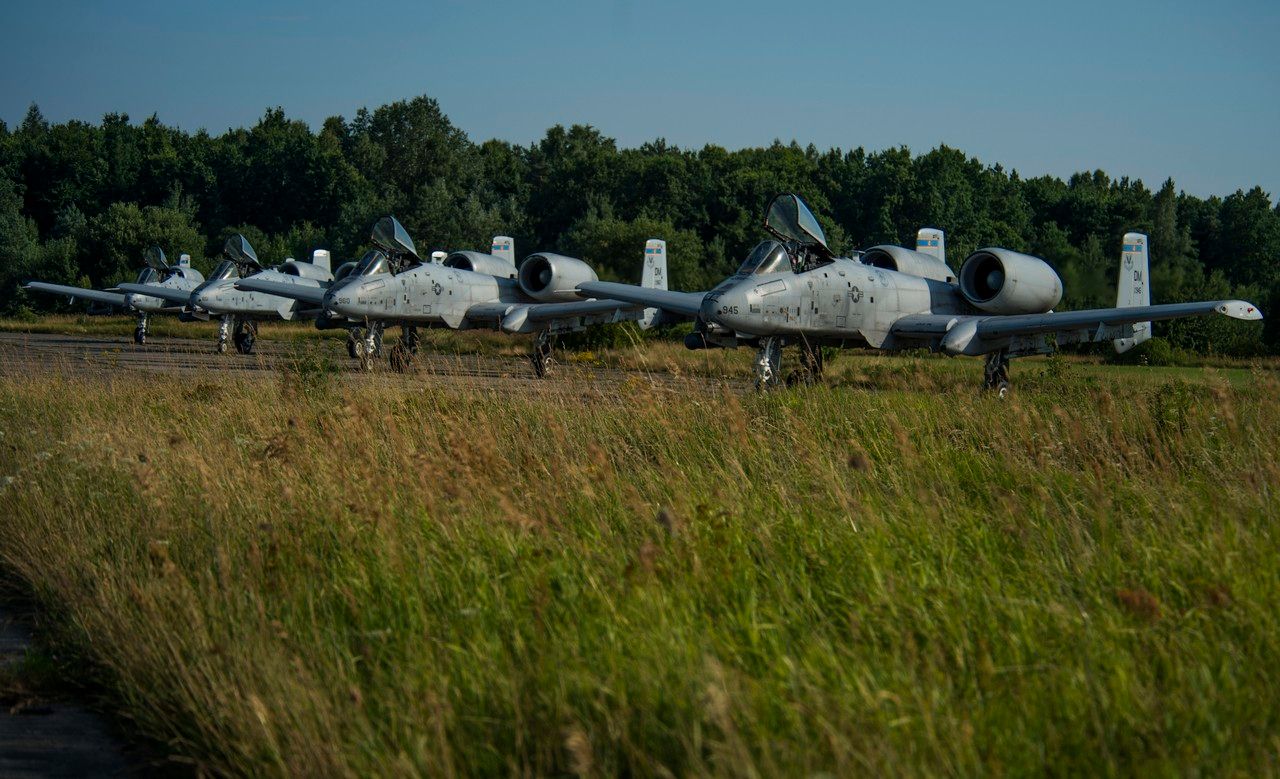
WATERS NEAR JAPAN (July 24, 2015) Four U.S. Navy EA-18G Growlers assigned to the Black Ravens of Electronic Attack Squadron (VAQ) 135 conduct bilateral training with four Japan Air Self-Defense Force F-15J Eagles. VAQ-135 is an expeditionary squadron deployed in the U.S. 7th Fleet area of responsibility supporting security and stability in the Indo-Asia-Pacific region. (U.S. Navy photo/Released)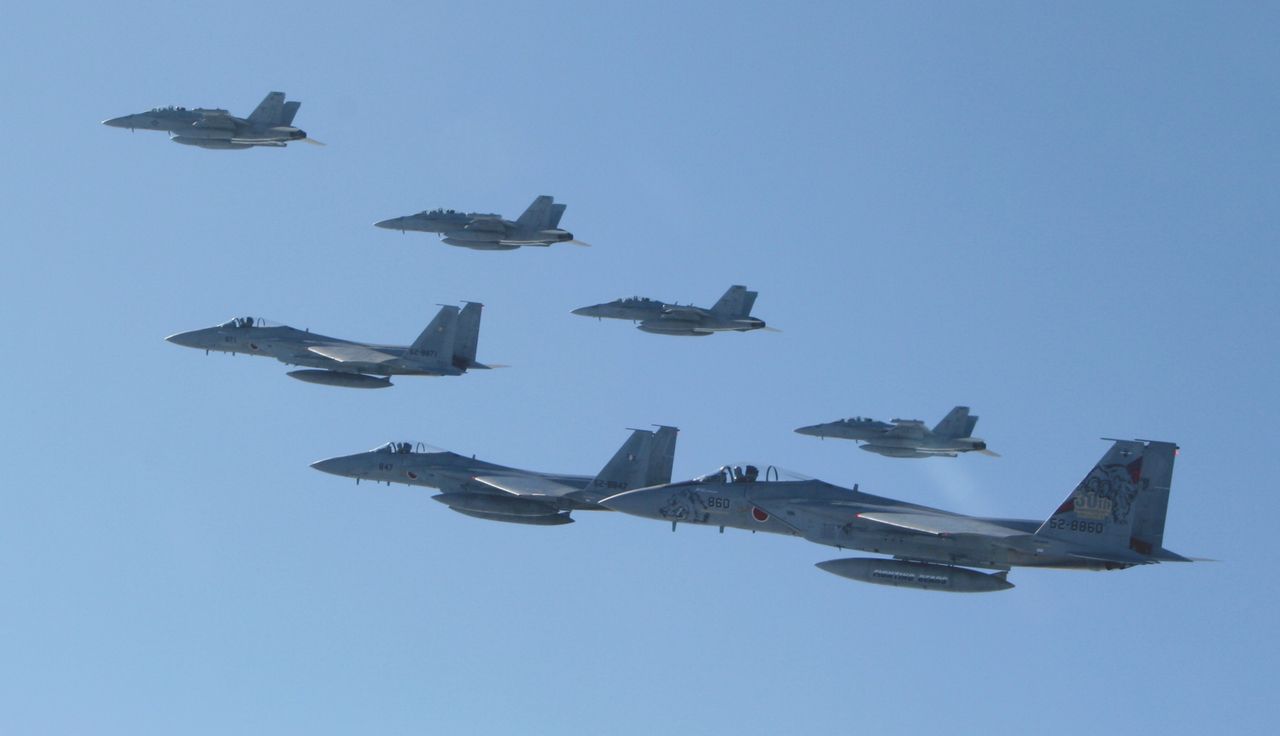
-
10 years ago
 Main Admin24 Jul 2015
Main Admin24 Jul 2015
Canada?s newly reborn CF-18 fighter squadron conducted its first operational fight since reactivating on 30 June.
The Royal Canadian Air Force (RCAF) announced on Facebook that the 401 Tactical Fighter Squadron based at Cold Lake, Alberta, took to the skies 20 July, marking the unit?s first operational flight since disbanding in 1996.
The squadron previously flew the CH-136 Kiowa helicopter out of Saint-Hubert, Quebec, and has now switched to fighters to bolster Canadian support for North American Aerospace Defense Command (NORAD).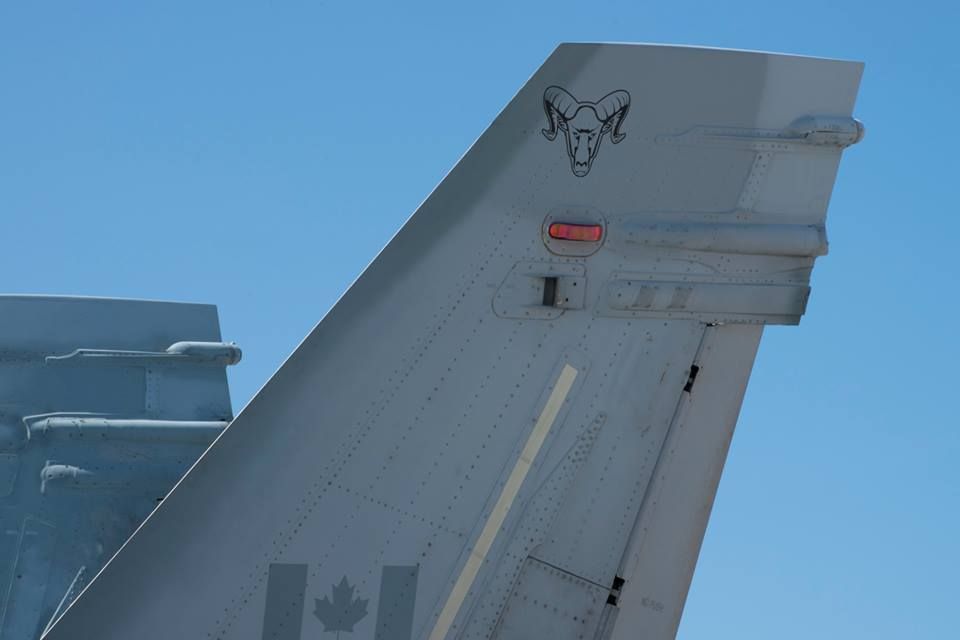
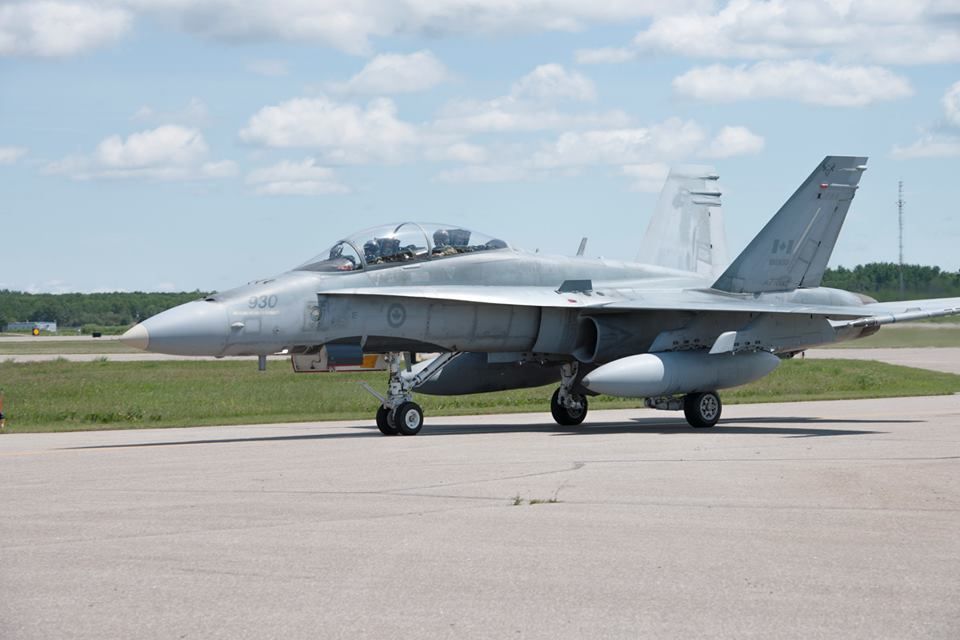
-
10 years agoTue Jul 28 2015, 01:20pm
 Main Admin28 July 2015
Main Admin28 July 2015
Royal Air Force and Indian Air Force fighter pilots participating in Exercise Indradanush are full of admiration for each other?s capabilities and aircraft.
The two week exercise has seen four Su-30MKI Flanker fighters from 2 Squadron IAF deploy from Northeast India to RAF Coningsby to train with Typhoon FGR4 equipped 3(Fighter) Squadron. The exercise provides a rare opportunity for RAF pilots to test themselves against the fourth generation Russian built fighter.
Over the course of two weeks the complexity of the training sorties is increasing, starting from 1 v 1 dogfight to sorties involving up to 20 fighters.
Wing Commander Chris Moon is Officer Commanding 3(F) Squadron. He said:
?First impressions of the Flanker are very positive. It is a superb aeroplane and it?s a privilege to operate our Typhoon alongside it.
?The RAF and IAF both pride ourselves on operating some of the leading edge technical equipment in the world. However without the people to support that we are nothing so that?s where our real strength lies.?
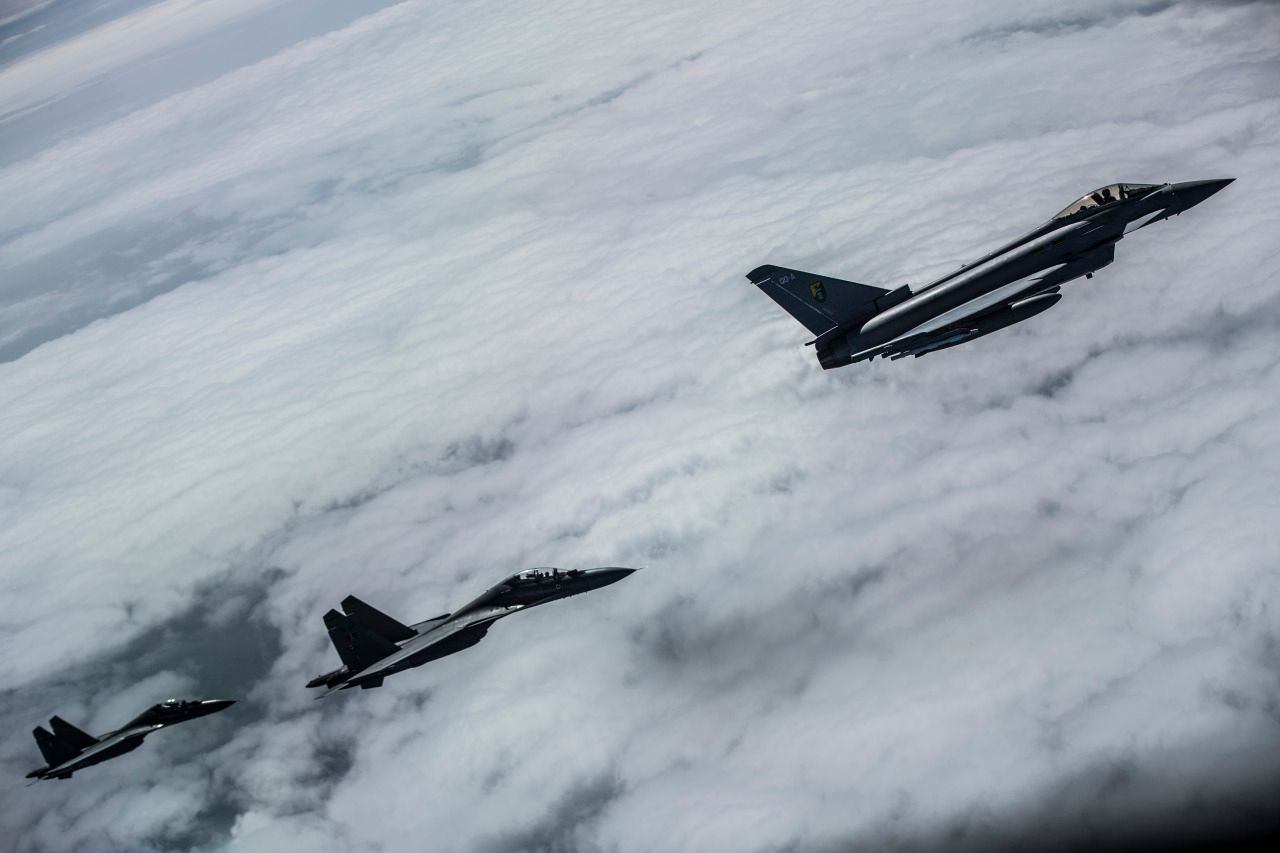
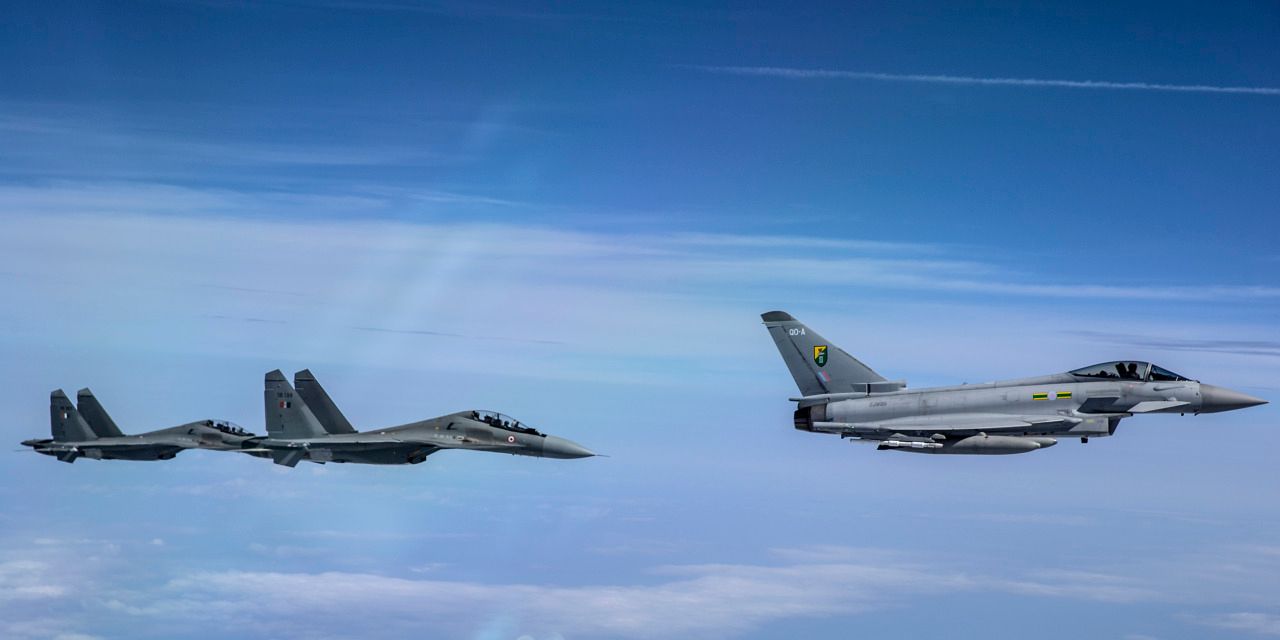
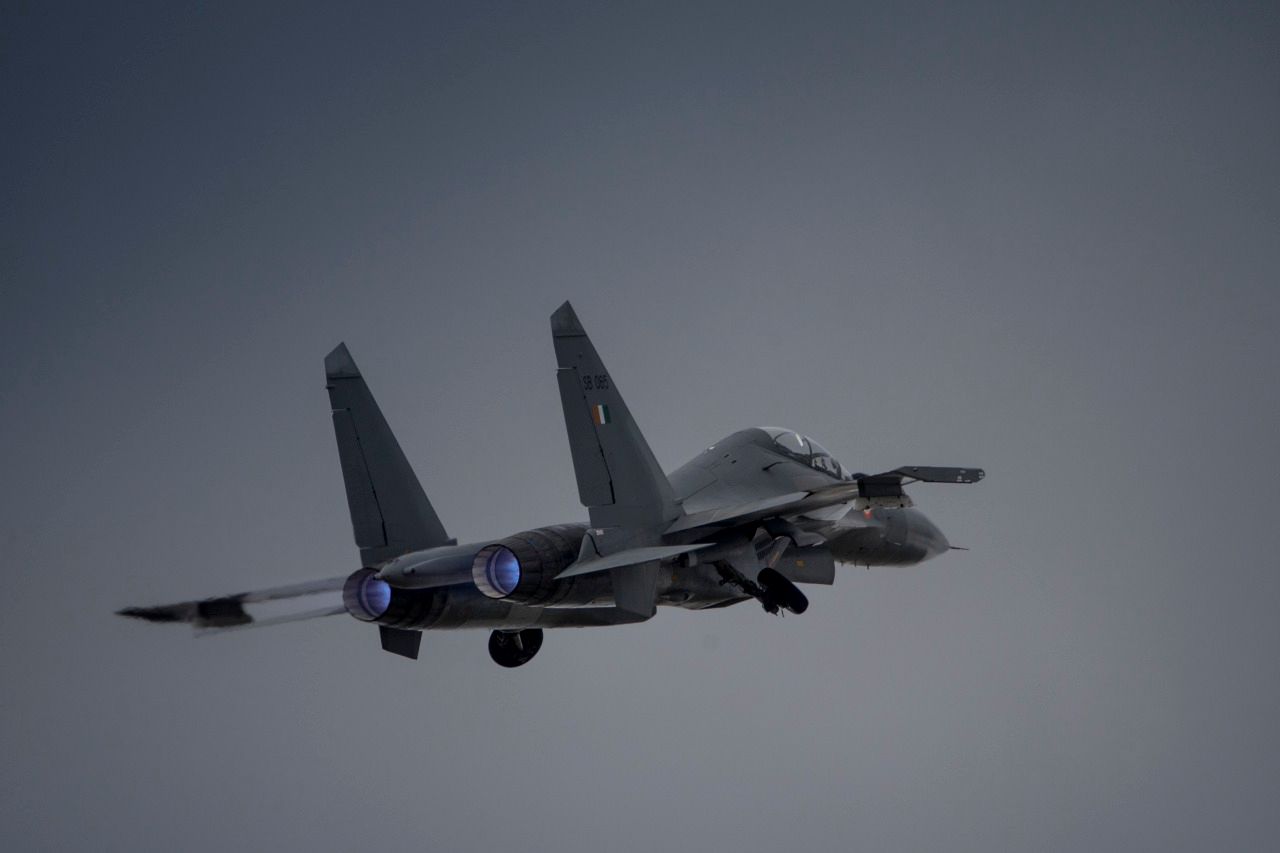
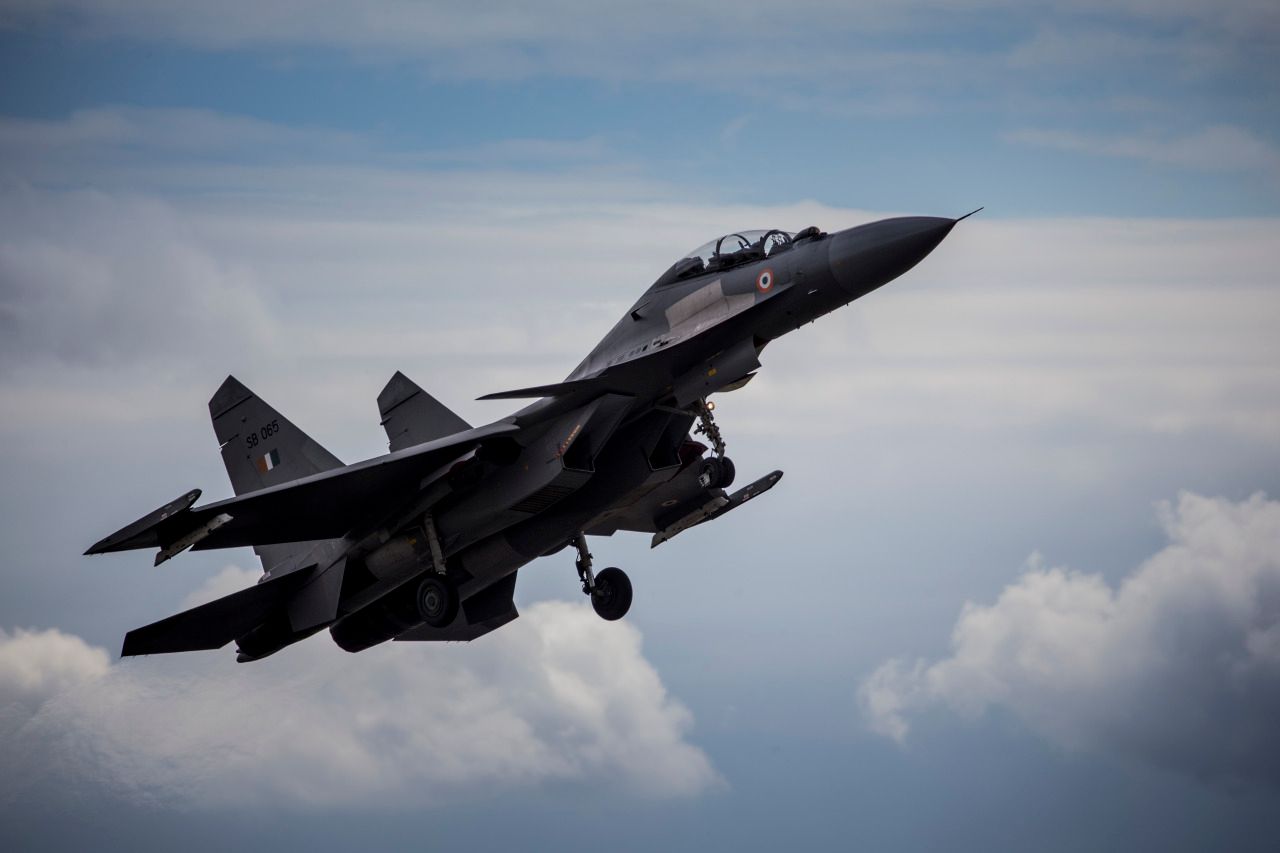

A U.S. Air Force B-1B Lancer from the 34th Expeditionary Bomb Squadron takes off to support Operation Inherent Resolve at Al Udeid Air Base, Qatar, July 23, 2015. OIR is the military intervention against Daesh. (U.S. Air Force photo by Staff Sgt. Sandra Welch)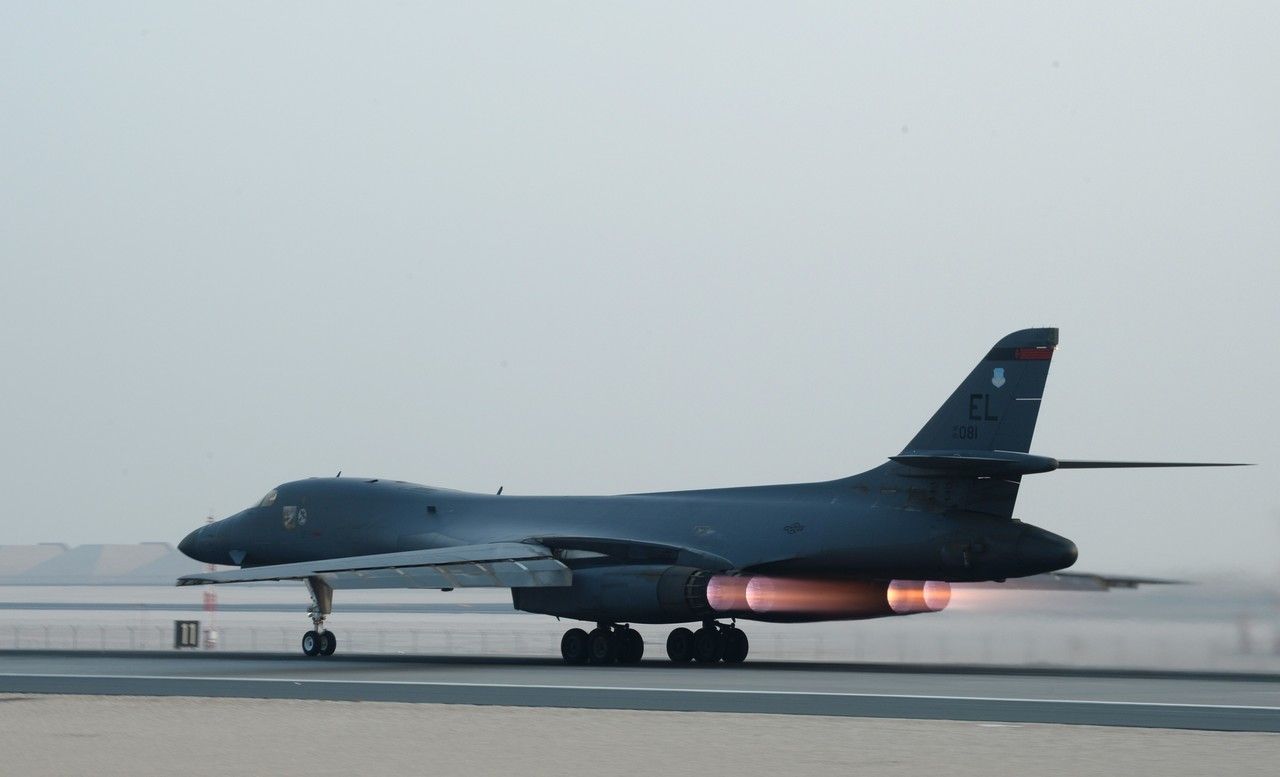
A U.S. Air Force KC-135 Stratotanker from the 340th Expeditionary Air Refueling Squadron refuels a USAF B-1B Lancer from the 34th Expeditionary Bomb Squadron over Southwest Asia in support of Operation Inherent Resolve, July 23, 2015. OIR is the military intervention against Daesh. (U.S. Air Force photo by Staff Sgt. Sandra Welch)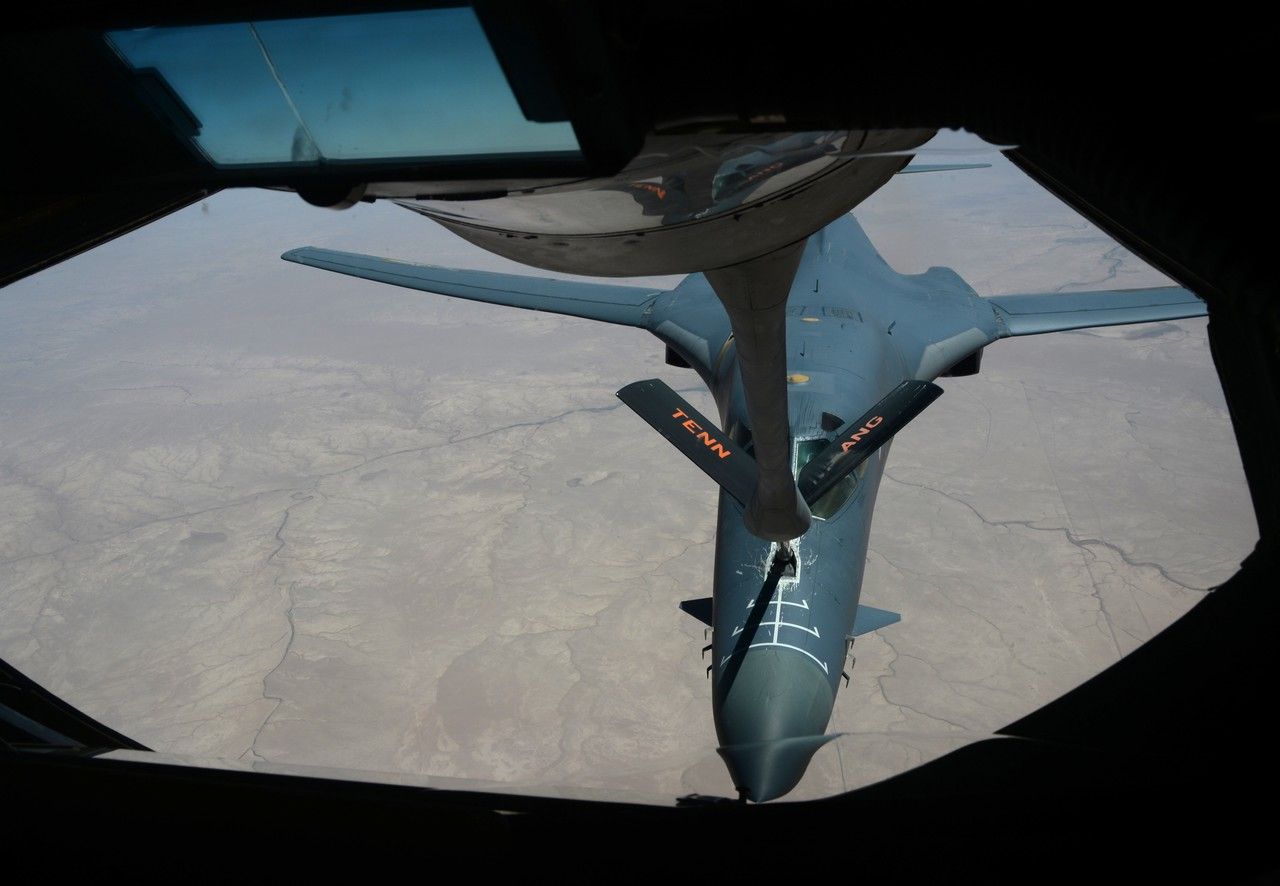
A U.S. Air Force B-1B Lancer from the 34th Expeditionary Bomb Squadron prepares to depart after refueling over Southwest Asia in support of Operation Inherent Resolve, July 23, 2015. OIR is the military intervention against Daesh. (U.S. Air Force photo by Staff Sgt. Sandra Welch)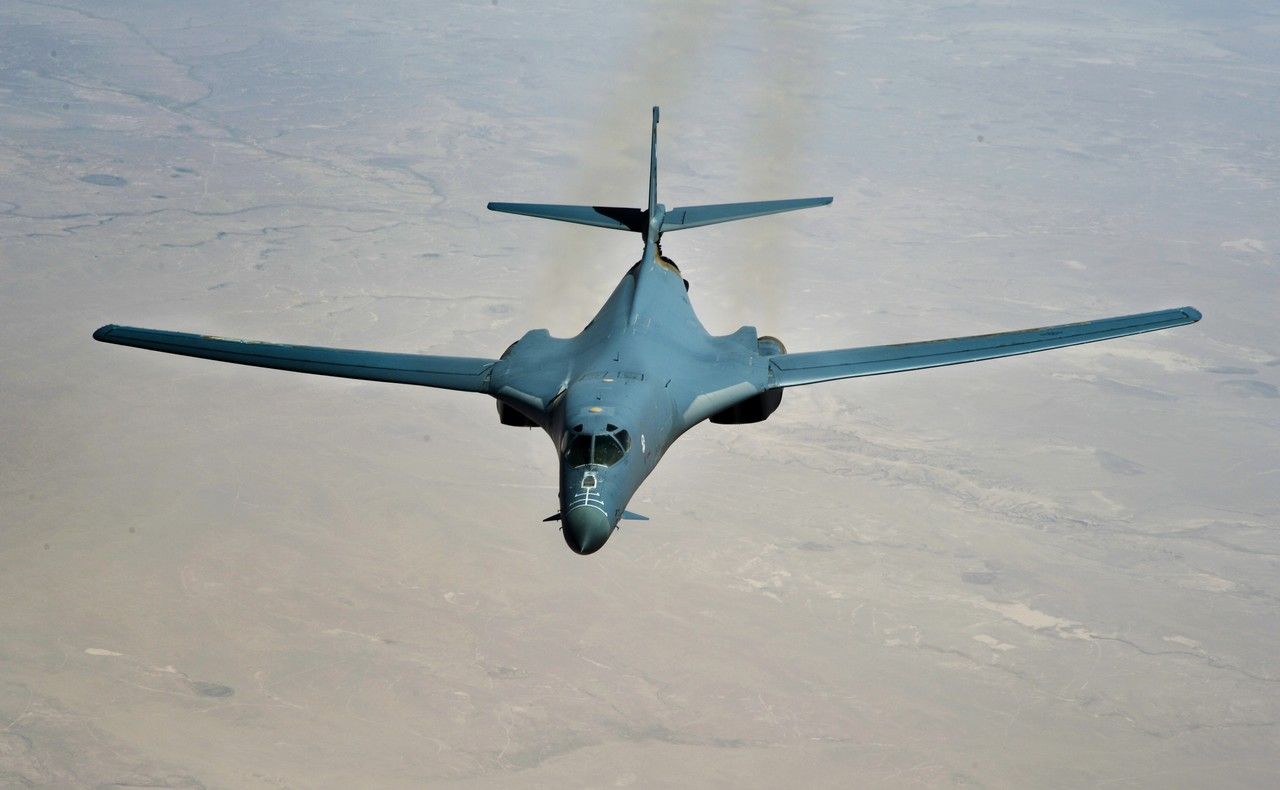
A U.S. Air Force B-1B Lancer departs after refueling from a USAF KC-135 Stratotanker from the 340th Expeditionary Air Refueling Squadron over Southwest Asia during a mission in support of Operation Inherent Resolve, July 23, 2015. OIR is the military intervention against Daesh. (U.S. Air Force photo by Staff Sgt. Sandra Welch)
SEATTLE, July 27, 2015 ? Boeing and Jin Air today celebrated the airline?s first direct-delivered Next-Generation 737-800 in Seattle.
Jin Air is the low-cost affiliated company of Korean Air. Today?s delivery marks the 13th Boeing 737-800 to join Jin Air?s all-Boeing fleet. The airline currently serves 16 routes in Asia and operates a total of 15 airplanes, including two 777-200ERs.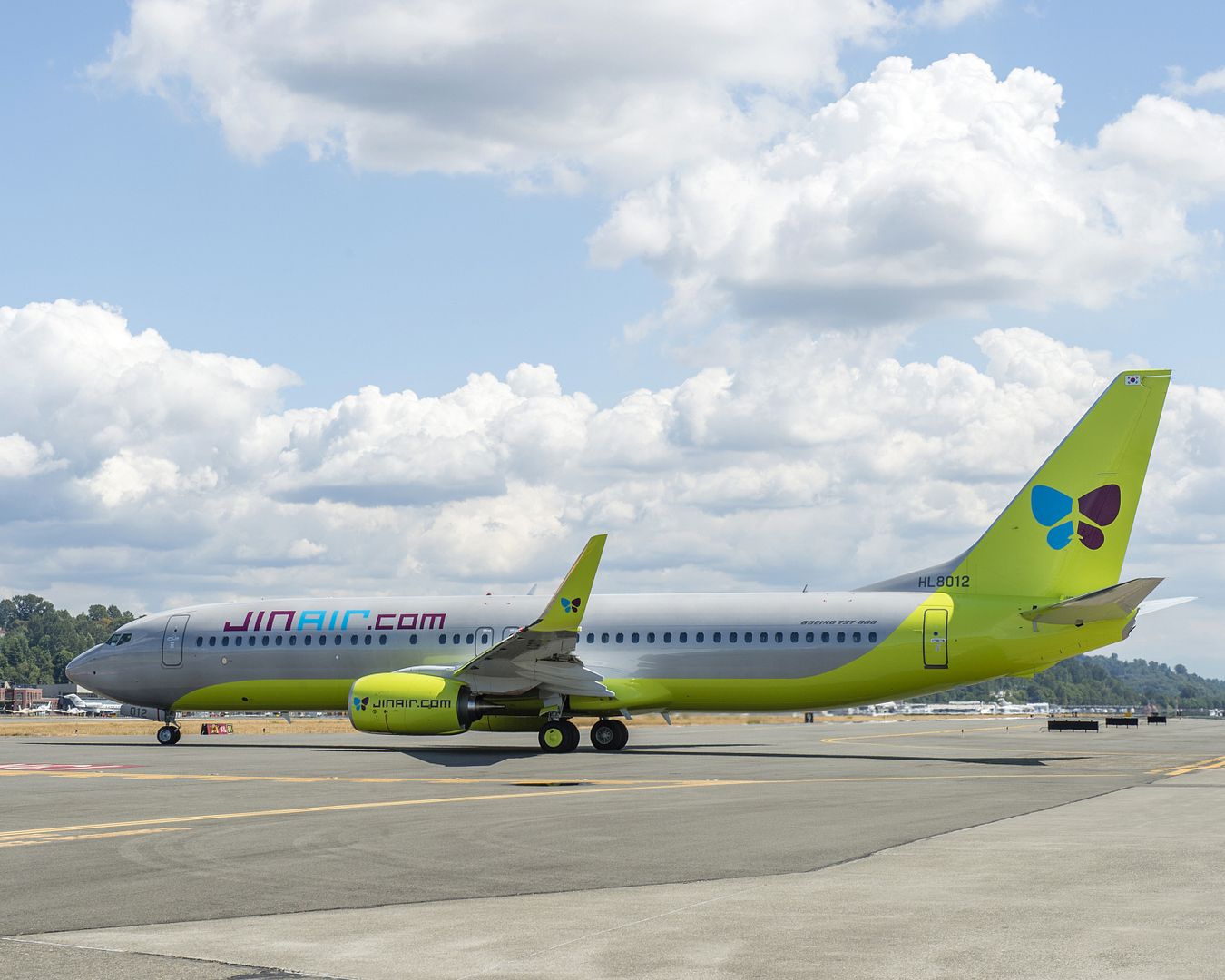
-
10 years agoWed Jul 29 2015, 04:54pm
 Main AdminAn F-15E Strike Eagle, assigned to the 492nd Fighter Squadron, takes off from Royal Air Force Lakenheath, England, July 28, 2015. The 48th Fighter Wing produces an average of 32 sorties throughout the day to maintain training requirements, with mission preparations beginning very early in the morning. (U.S. Air Force photo's by Senior Airman Trevor T. McBride/Released)
Main AdminAn F-15E Strike Eagle, assigned to the 492nd Fighter Squadron, takes off from Royal Air Force Lakenheath, England, July 28, 2015. The 48th Fighter Wing produces an average of 32 sorties throughout the day to maintain training requirements, with mission preparations beginning very early in the morning. (U.S. Air Force photo's by Senior Airman Trevor T. McBride/Released)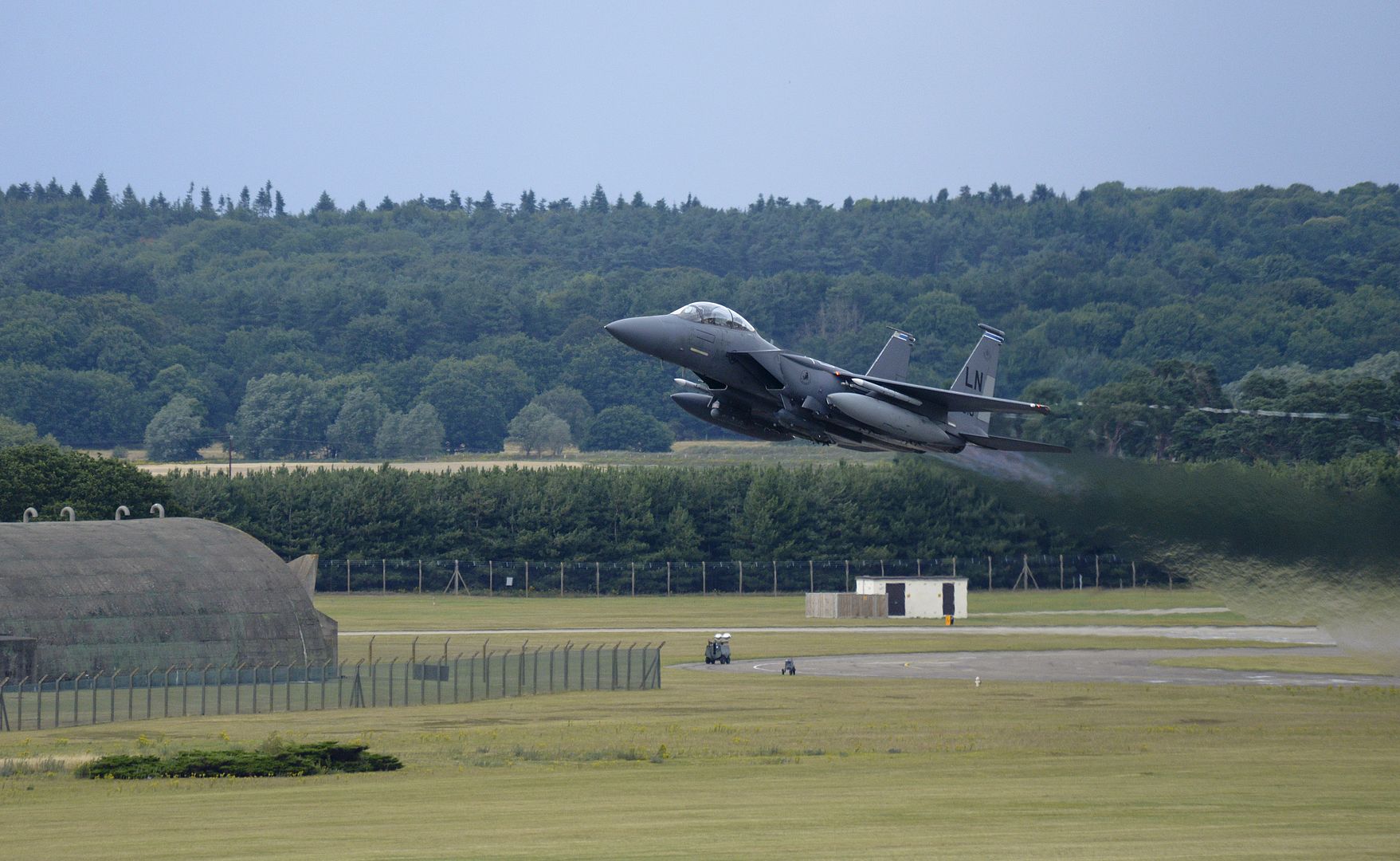

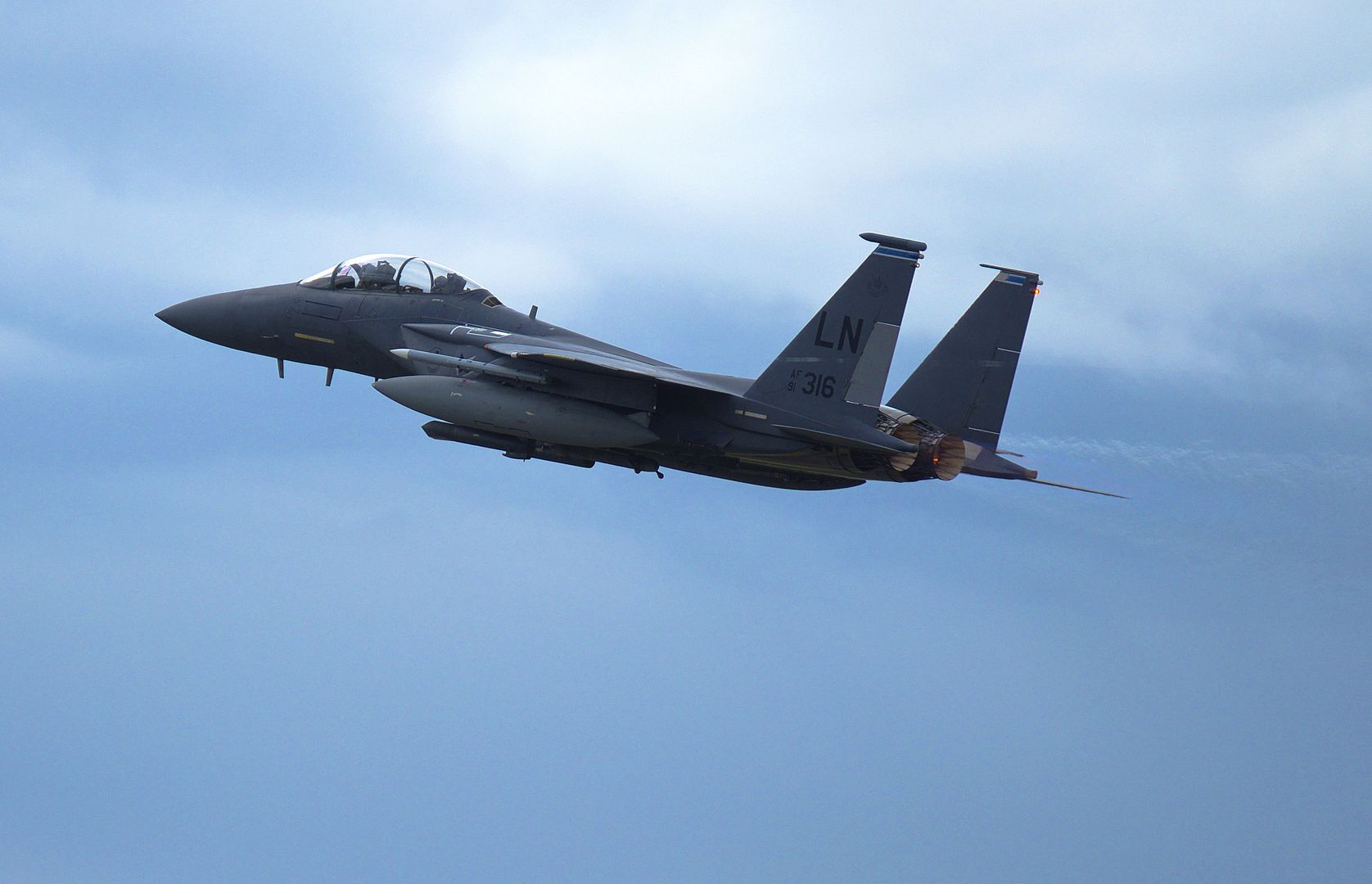
Two U.S. Air Force F-16 Fighting Falcons, from the New Jersey Air National Guard's 177th Fighter Wing, right, lead a mixed formation including a Bulgarian air force MiG-29 Fulcrum and MiG-21 Fishbed over Bulgaria during Thracian Star on July 20, 2015. Thracian Star 2015 is a bilateral training exercise to enhance interoperability with the Bulgarian air force, hosted by Graf Ignatievo Air Base. (U.S. Air National Guard photo's by Master Sgt. Andrew J. Moseley/Released)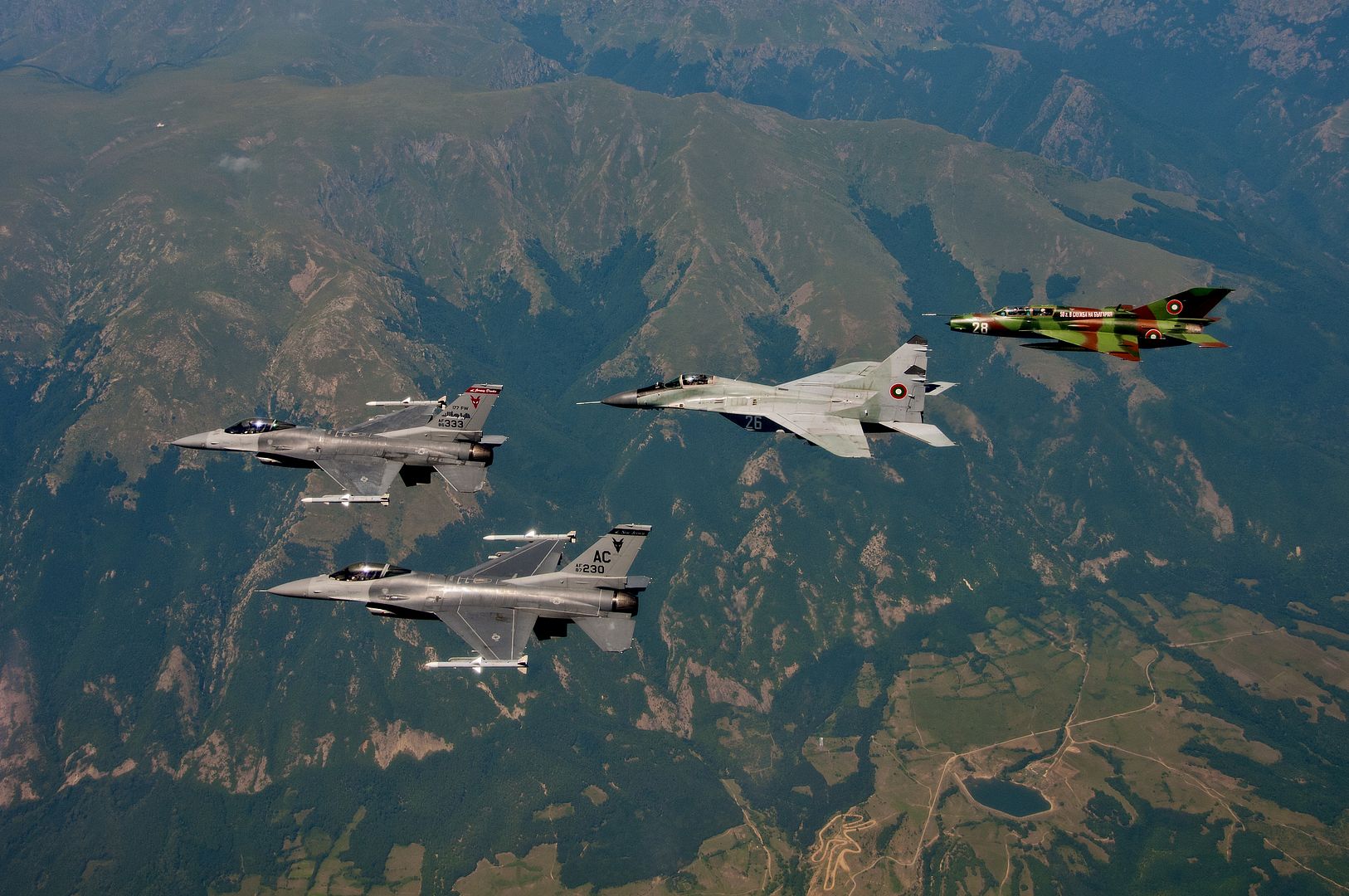
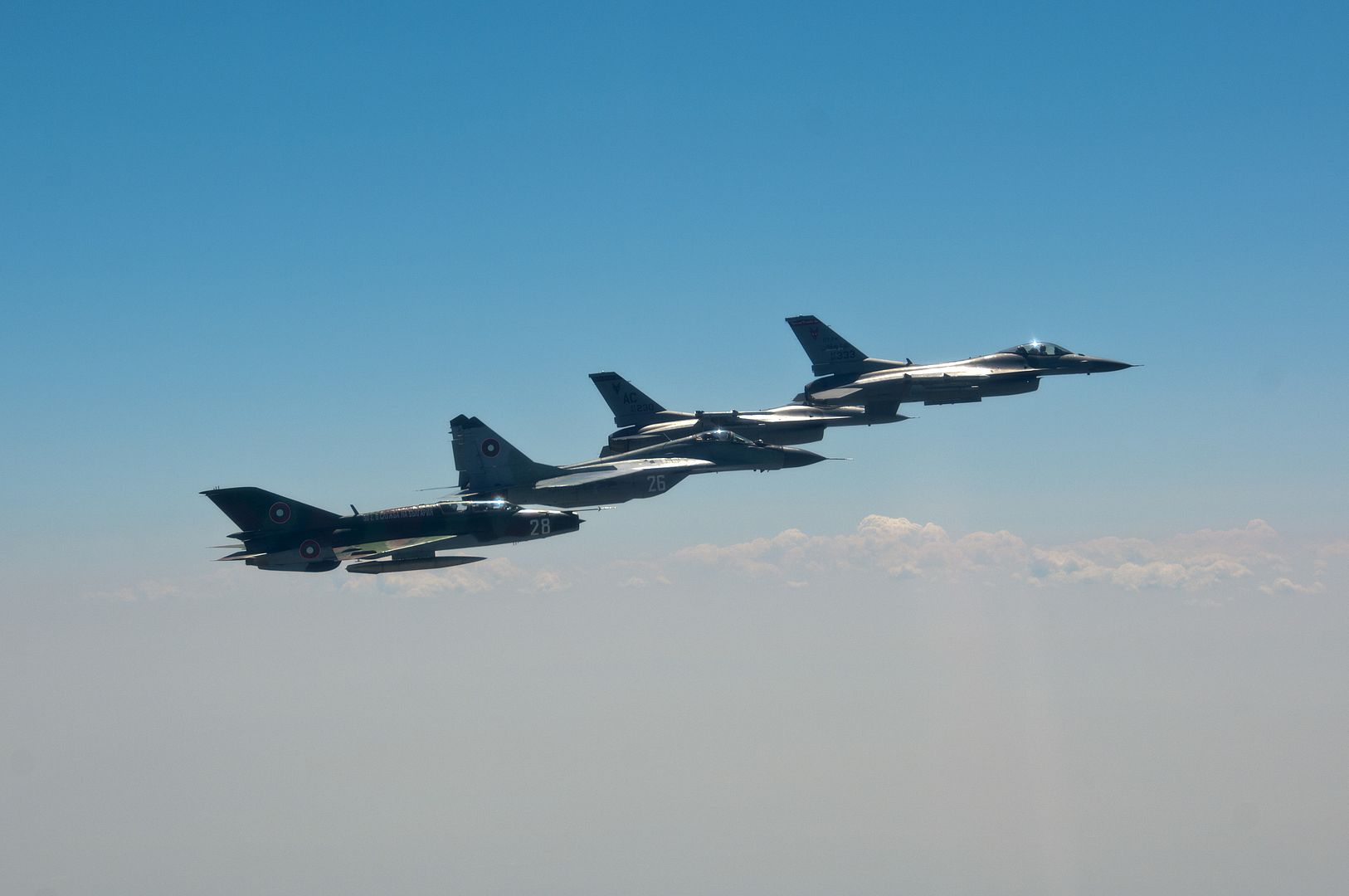
-
10 years agoThu Jul 30 2015, 01:36pm
 Main AdminOn Friday 24th July as part of NATO?s ongoing mission to police Baltic airspace, RAF Typhoons intercepted 10 Russian aircraft during a single Baltic Air Patrol, Quick Reaction Alert mission:
Main AdminOn Friday 24th July as part of NATO?s ongoing mission to police Baltic airspace, RAF Typhoons intercepted 10 Russian aircraft during a single Baltic Air Patrol, Quick Reaction Alert mission:
The Typhoon aircraft, from 6 (Fighter) Squadron, RAF Lossiemouth were launched after multiple groups of aircraft were detected by NATO air defences in international airspace near to the Baltic States. Once airborne, the RAF jets identified the aircraft as 4 x FULLBACKS Sukhoi Su-34 fighters, 4 x FOXHOUNDS Mikoyan MiG-31 fighters and 2 x Antonov An26 ?CURL? transport aircraft who appeared to be carrying out a variety of routine training. The Russian aircraft were monitored by the RAF Typhoons and escorted on their way.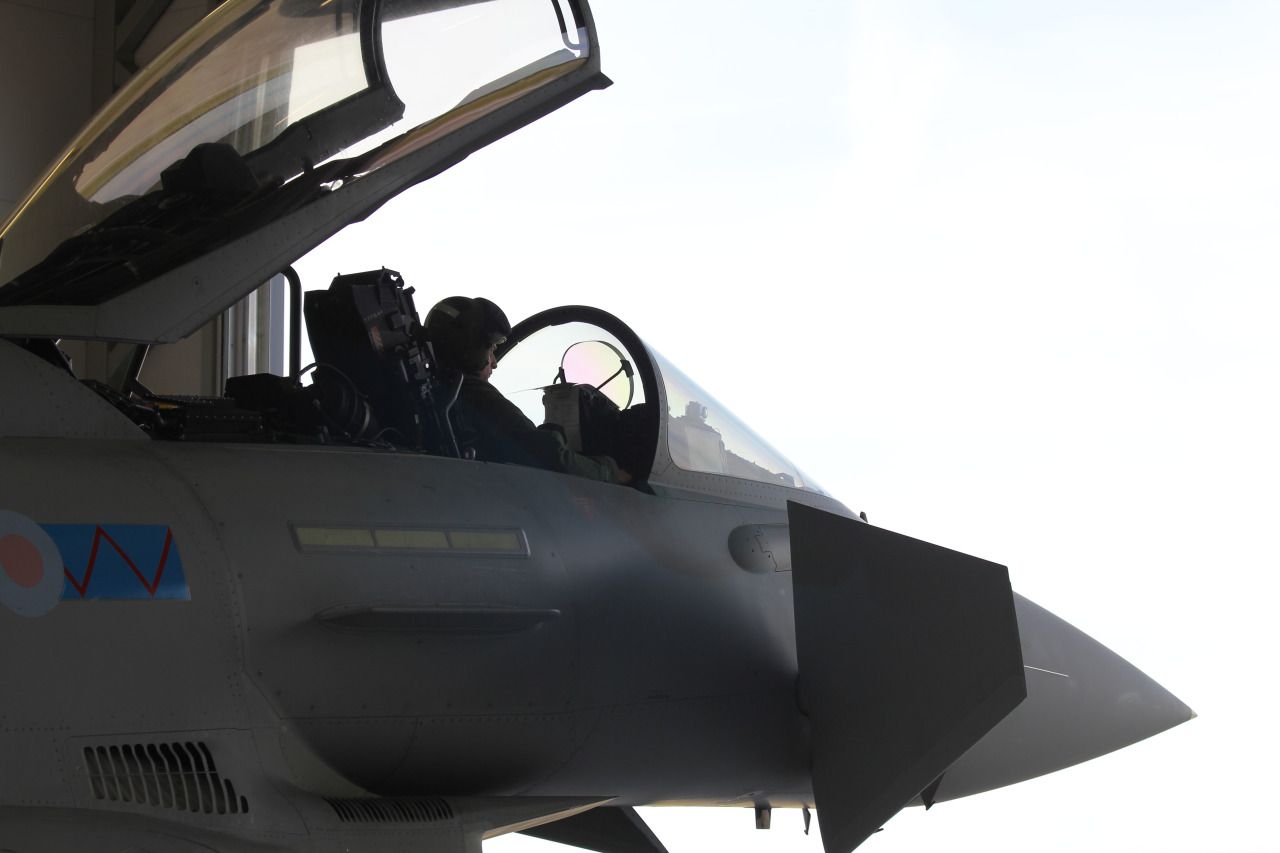

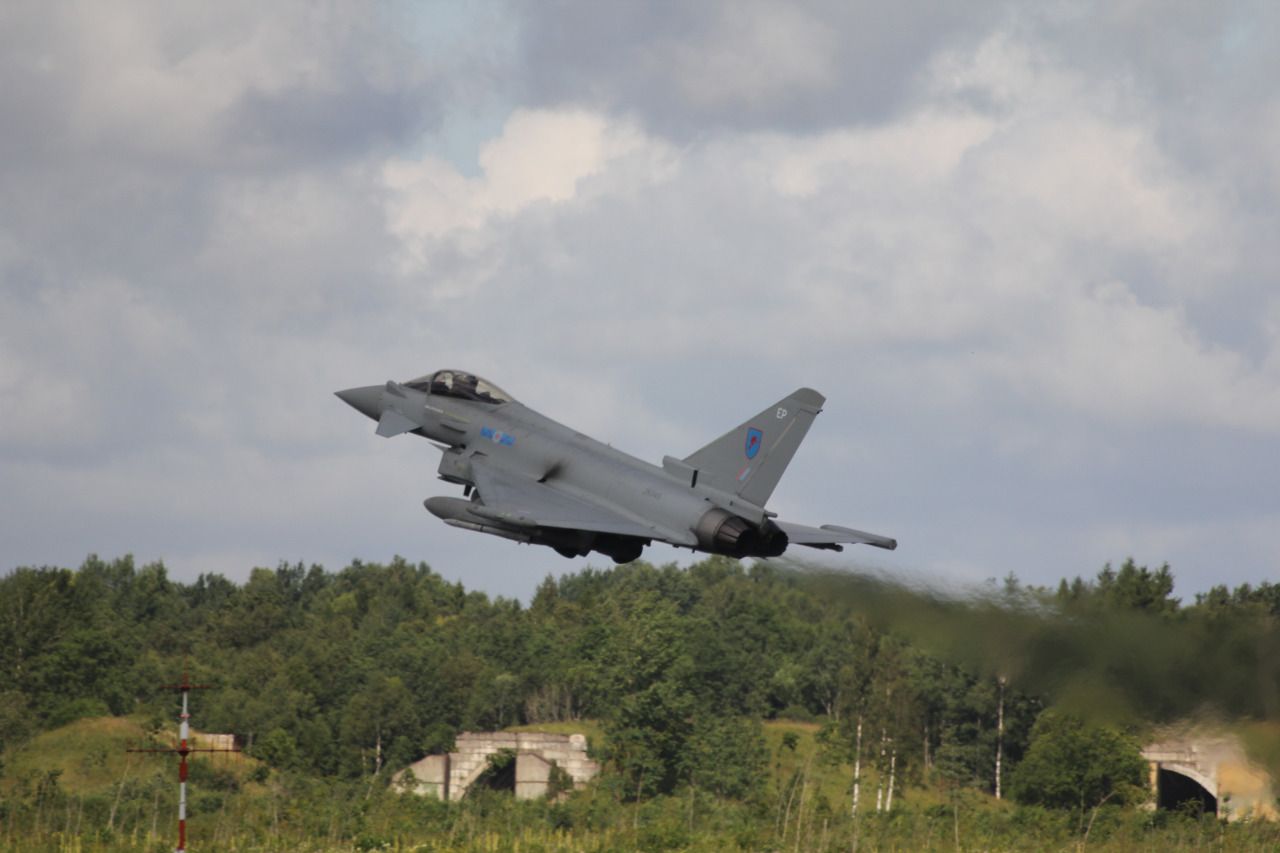
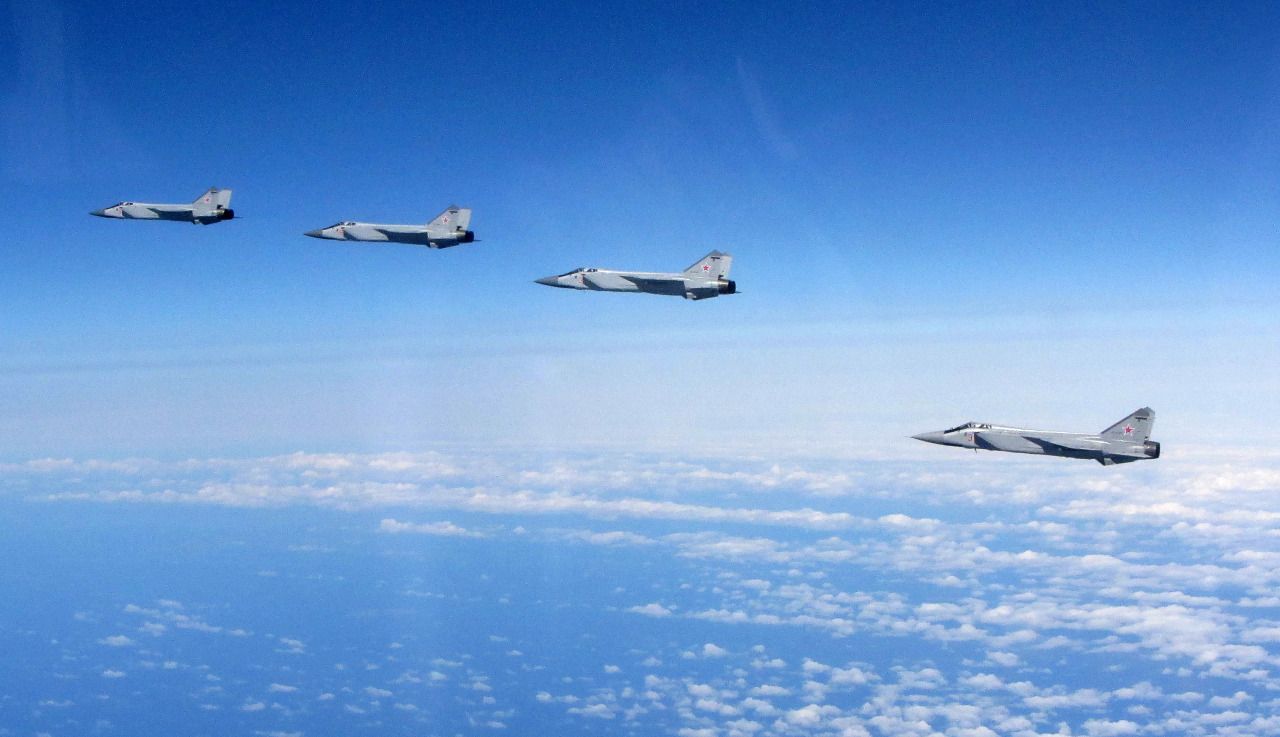

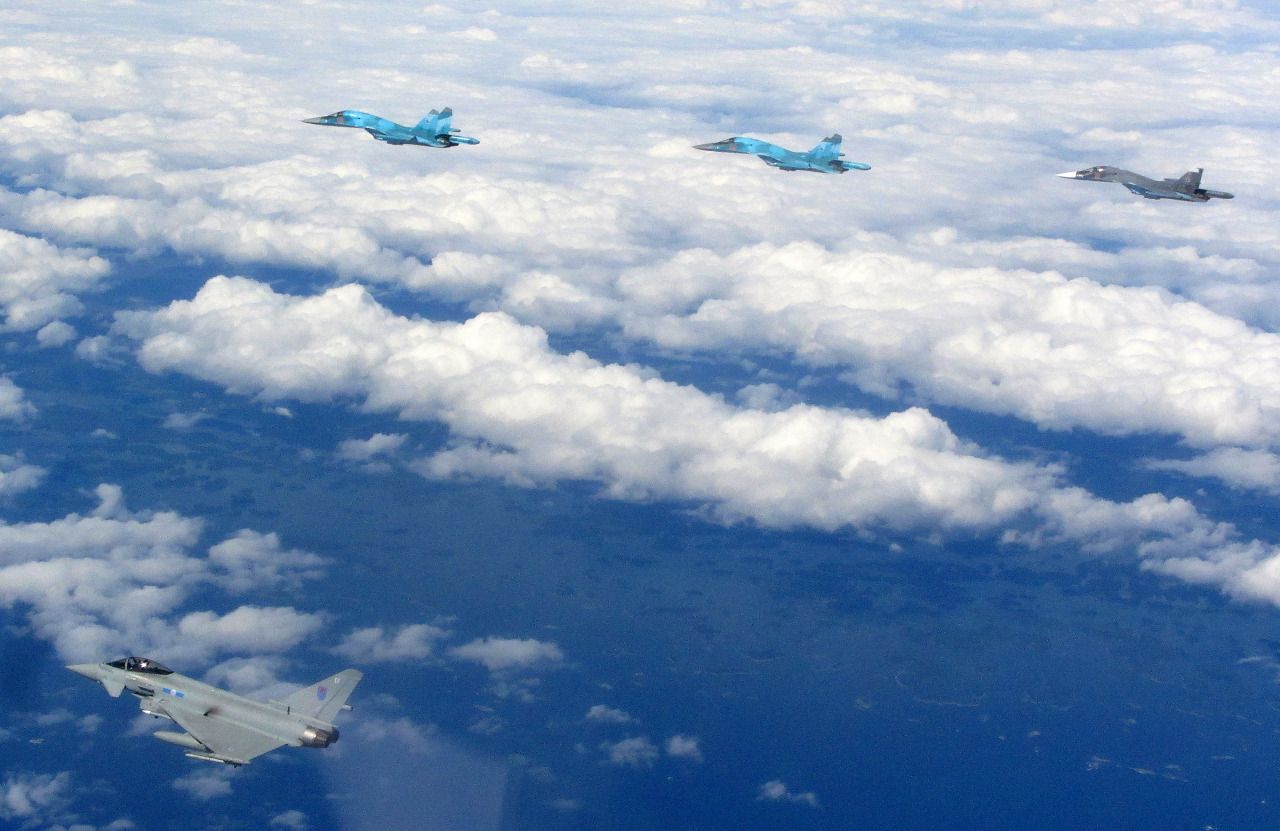
An F-35 Lightning II assigned to the 61st Fighter Squadron at Luke Air Force Base takes off, July 28, 2015. Since 2010, the F-35 has flown more than 30,000 hours. (U.S. Air Force photo's by Staff Sgt. Staci Miller)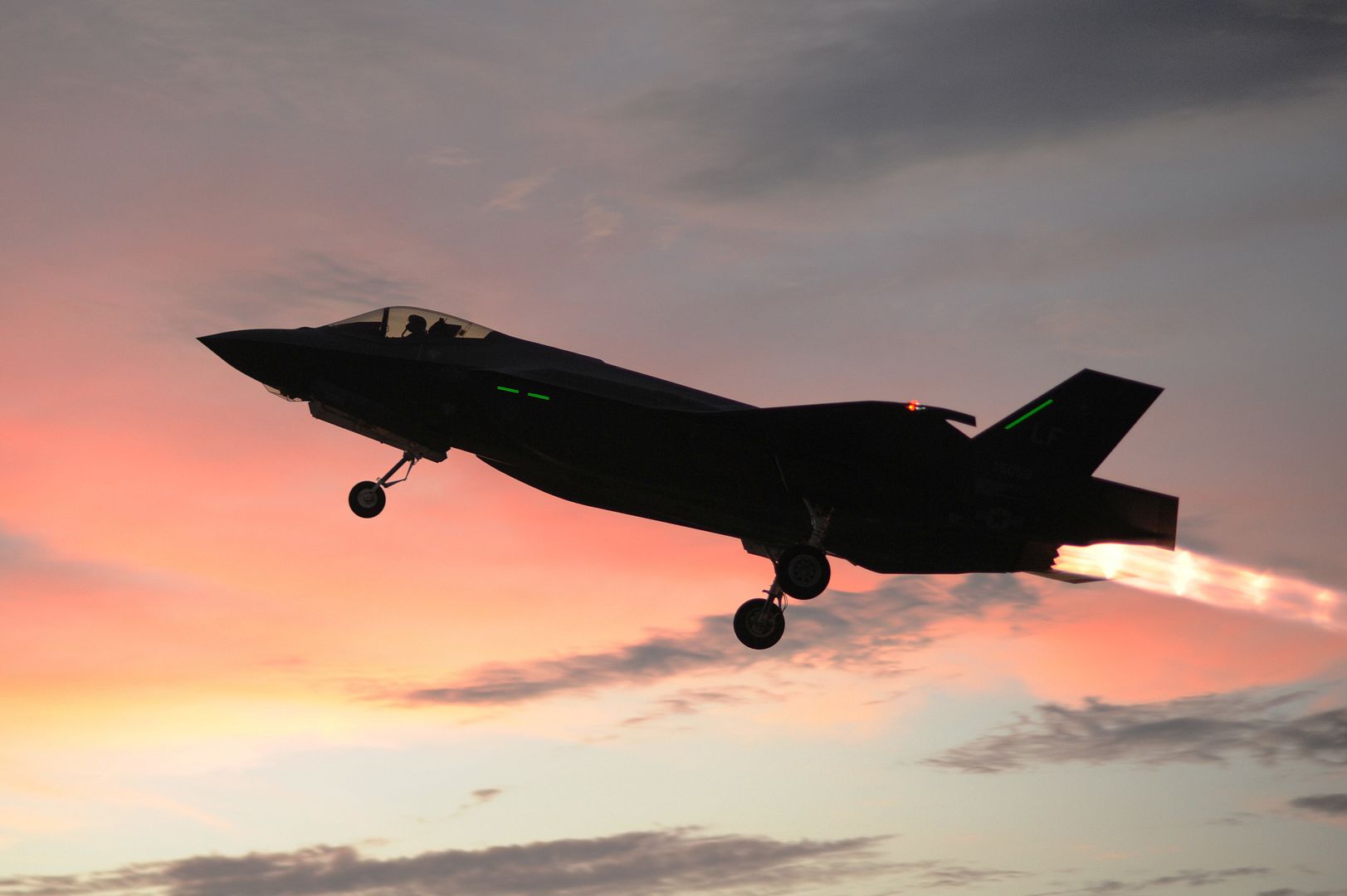
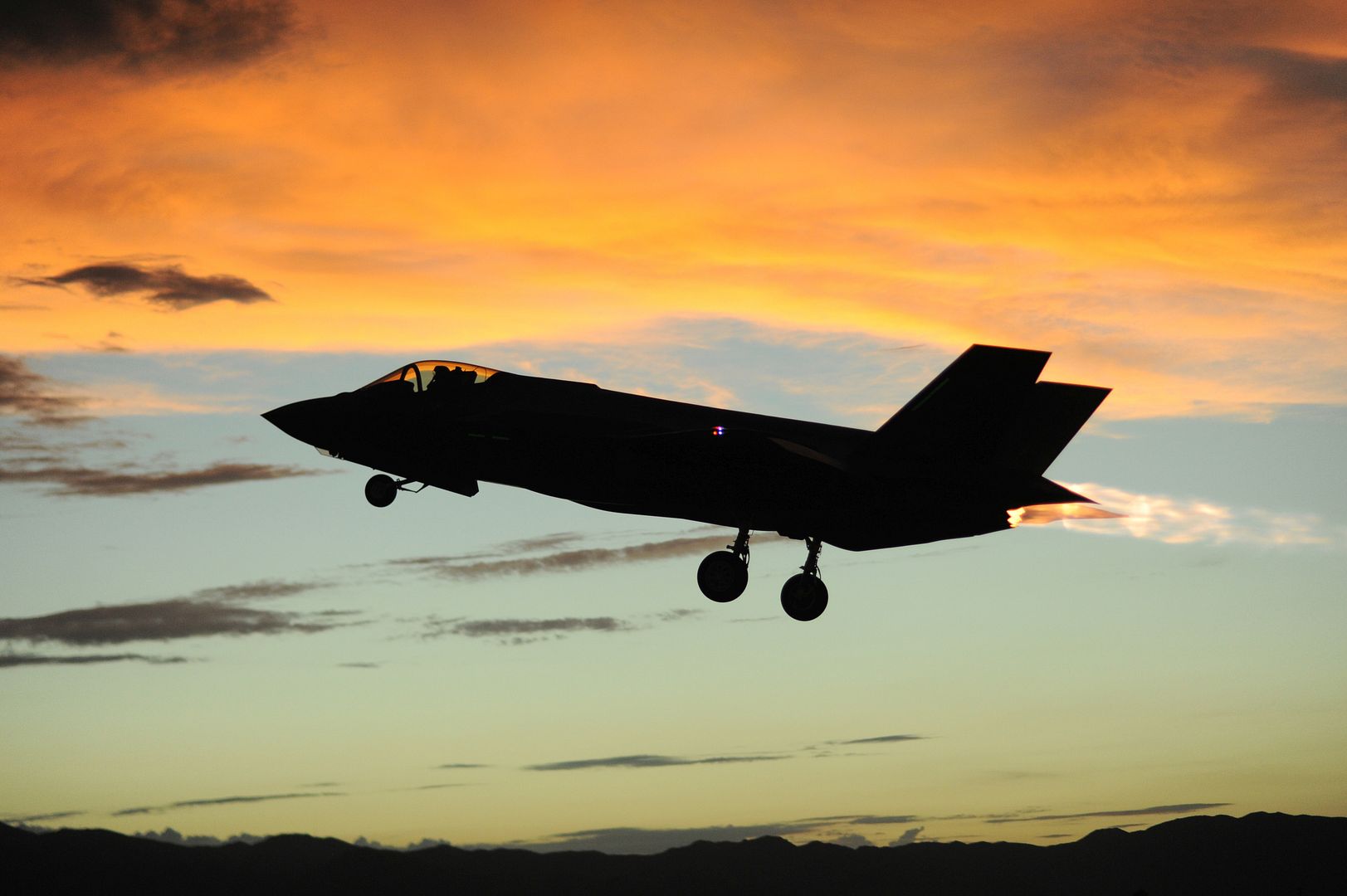
An MV-22 Osprey lands during a personnel recovery training exercise in Southwest Asia, July 28, 2015. The 185th Theater Aviation Brigade conducts interoperability training missions to enhance mission capabilities between U.S. Army aviation and other U.S. military forces. (U.S. Army National Guard photo by Army Sgt. Michael Needham/Released)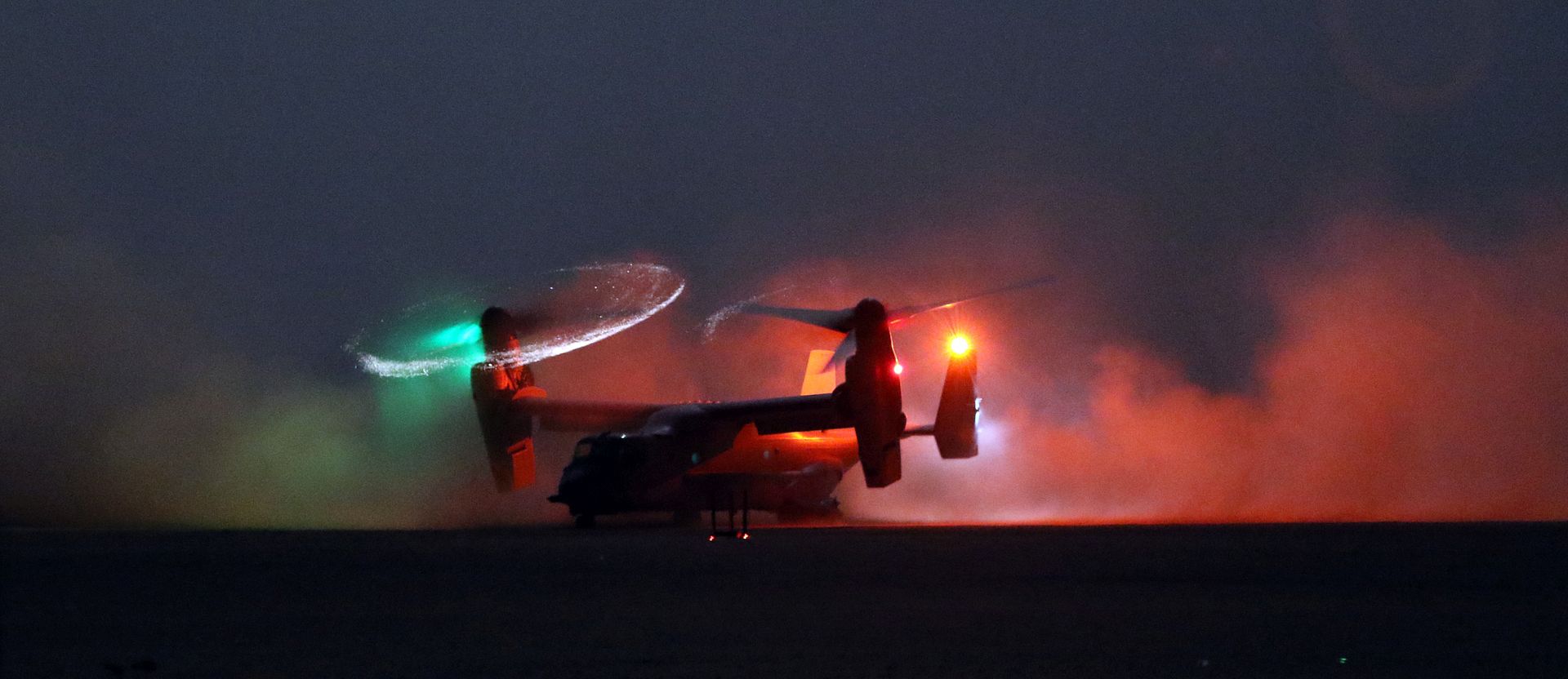
July 29, 2015
Boeing is unveiling an Australian version of the aircraft that offers a veil of protection to fighter fleets. The Royal Australian Air Force (RAAF) is receiving its first EA-18G Growler. Australia joins the United States as the only two nations to fly the airborne electronic attack platform. The Growler?s radar-jamming devices deceive and frustrate enemy forces and allow strike jets to carry out their missions undetected. ?The Growlers really compliment our air combat capability our legacy fighters, our Super Hornets and the Joint Strike Fighter (JSF); they?ll be a lot more lethal when you have a Growler up there to support,? said Wing Cmdr. Cameron Cornell, deputy project manager, Australian Growler program. Members of the Royal Australian Air Force will train with the U.S. Navy to learn the intricacies of controlling the electromagnetic spectrum.
The Royal Australian Growler recently demonstrated its agile flight capabilities during its first flight in St. Louis, Mo., where the Growler and Super Hornet assembly lines are located.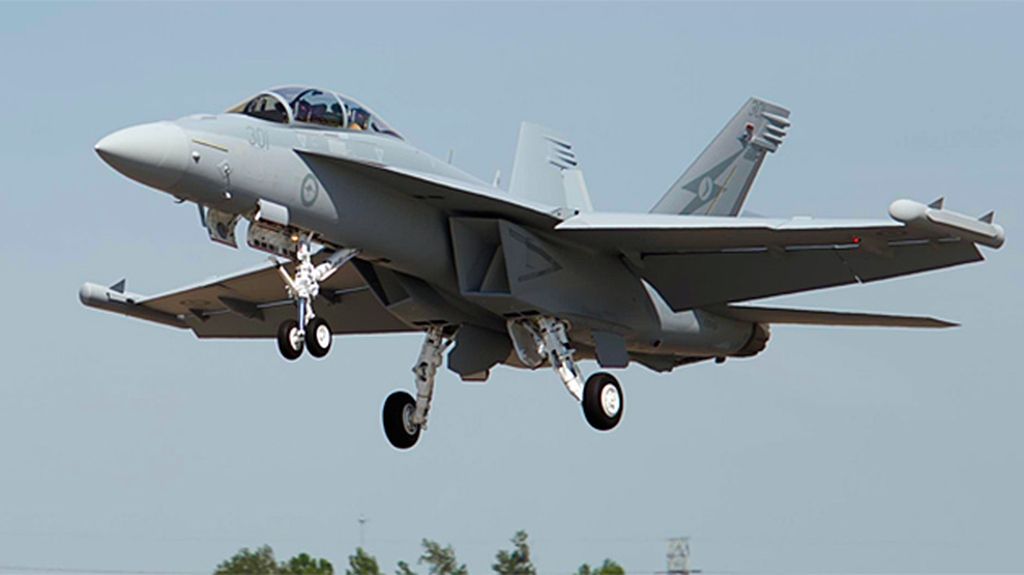
-
10 years ago
 Main AdminMARIETTA, Ga., July 31, 2015 ? Lockheed Martin (NYSE: LMT) delivered the 29th C-5M Super Galaxy to the U. S. Air Force on July 28. A Defense Contract Management Agency (DCMA) aircrew ferried the aircraft from the Lockheed Martin facility here to Stewart Air National Guard Base, New York, where it will undergo internal paint restoration.
Main AdminMARIETTA, Ga., July 31, 2015 ? Lockheed Martin (NYSE: LMT) delivered the 29th C-5M Super Galaxy to the U. S. Air Force on July 28. A Defense Contract Management Agency (DCMA) aircrew ferried the aircraft from the Lockheed Martin facility here to Stewart Air National Guard Base, New York, where it will undergo internal paint restoration.
Once paint restoration is completed, the aircraft will then be flown to Travis Air Force Base, California, where it will be permanently based. It will be the eleventh Super Galaxy assigned to Travis.
The aircraft (U. S. Air Force serial number 84-0062) as originally delivered to the Air Force in July 1986 and has recorded approximately 21,975 flight hours over its career.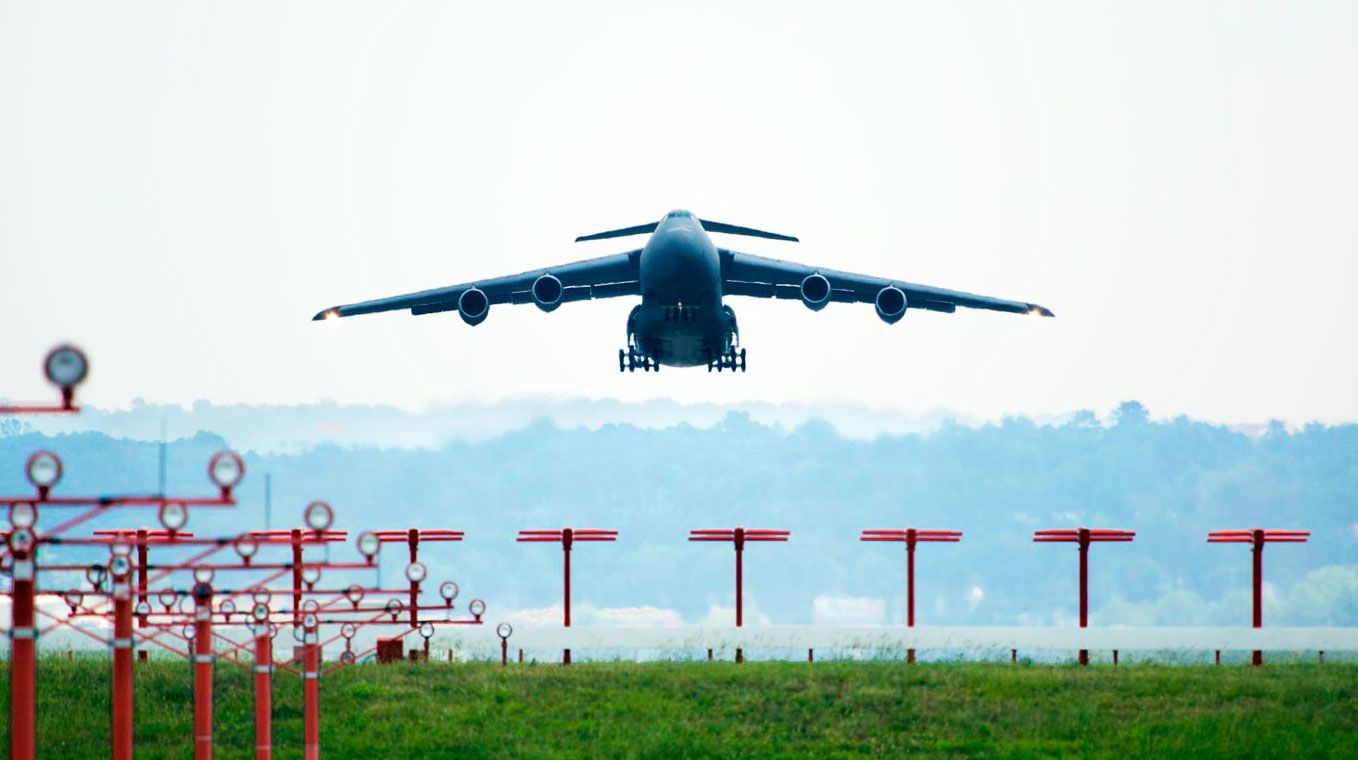
-
10 years agoTue Aug 04 2015, 04:02pm
 Main Admin
Main Admin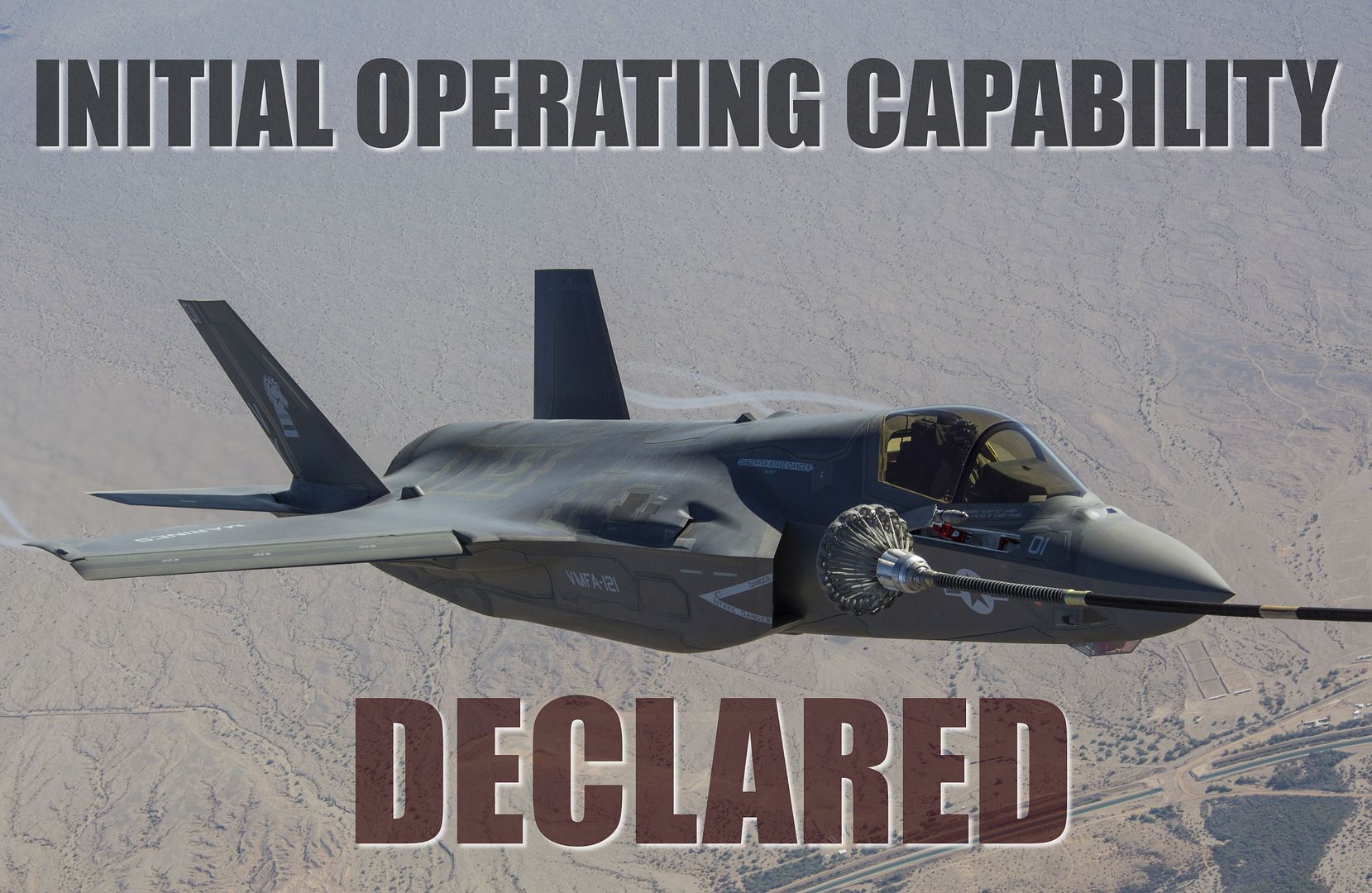
WASHINGTON - The U.S. Marine Corps' F-35B Lightning II aircraft reached initial operational capability today with a squadron of 10 F-35Bs ready for worldwide deployment.
Marine Fighter Attack Squadron 121 (VMFA-121), based in Yuma, Arizona, is the first squadron in military history to become operational with an F-35 variant, following a five-day Operational Readiness Inspection (ORI), which concluded July 17.
"I am pleased to announce that VMFA-121 has achieved initial operational capability in the F-35B, as defined by requirements outlined in the June 2014 Joint Report to Congressional Defense Committees," said Gen. Joseph Dunford, Commandant of the Marine Corps. "VMFA-121 has ten aircraft in the Block 2B configuration with the requisite performance envelope and weapons clearances, to include the training, sustainment capabilities, and infrastructure to deploy to an austere site or a ship. It is capable of conducting close air support, offensive and defensive counter air, air interdiction, assault support escort and armed reconnaissance as part of a Marine Air Ground Task Force, or in support of the Joint Force."
Dunford stated that he has his full confidence in the F-35B's ability to support Marines in combat, predicated on years of concurrent developmental testing and operational flying.
"Prior to declaring IOC, we have conducted flight operations for seven weeks at sea aboard an L-Class carrier, participated in multiple large force exercises, and executed a recent operational evaluation which included multiple live ordnance sorties," said Dunford. "The F-35B's ability to conduct operations from expeditionary airstrips or sea-based carriers provides our Nation with its first 5th generation strike fighter, which will transform the way we fight and win."
As the future of Marine Corps tactical aviation, the F-35 will eventually replace three legacy platforms: The AV-8B Harrier, the F/A-18 Hornet, and the EA-6B Prowler.
"The success of VMFA-121 is a reflection of the hard work and effort by the Marines in the squadron, those involved in the program over many years, and the support we have received from across the Department of the Navy, the Joint Program Office, our industry partners, and the Under Secretary of Defense. Achieving IOC has truly been a team effort," concluded Dunford.
The U.S. Marine Corps has trained and qualified more than 50 Marine F-35B pilots and certified about 500 maintenance personnel to assume autonomous, organic-level maintenance support for the F-35B.
VMFA-121's transition will be followed by Marine Attack Squadron 211 (VMA-211), an AV-8B squadron, which is scheduled to transition to the F-35B in fiscal year 2016. In 2018, VMA-311 will conduct its transition to the F-35B.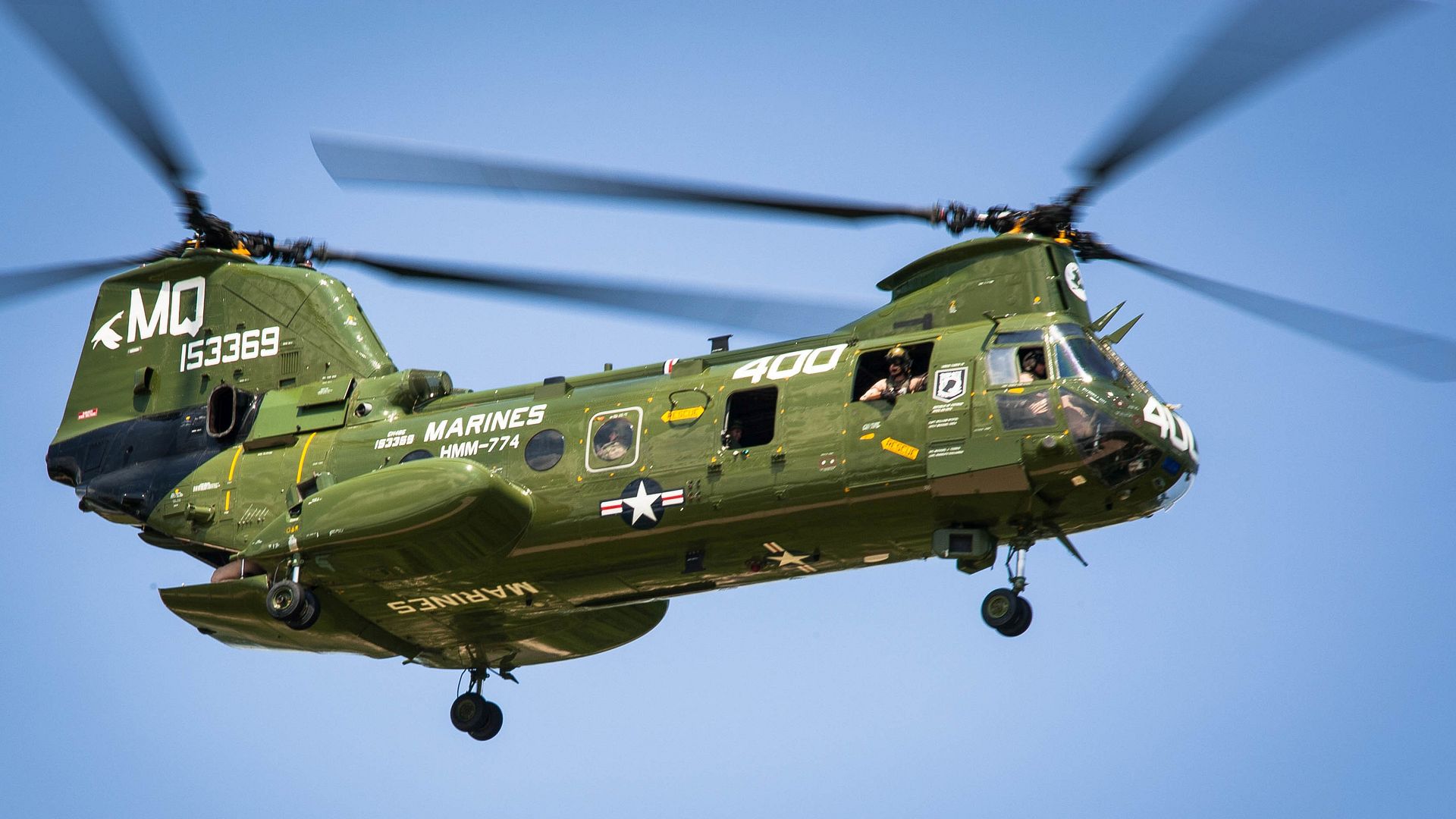
FORT MEADE, Md. - The Boeing Vertol CH-46 Sea Knight conducted its first flight August 1962 and on August 1, 2015, the Sea Knight made its final flight to the Smithsonian Institution National Air and Space Museum?s Steven F. Udvar-Hazy Center, in Chantilly, Virginia.
The ceremony was conducted by Marines from Marine Medium Helicopter Squadron 774, 4th Marine Aircraft Wing Marine Corps Forces Reserve and Marines from Marine Helicopter Squadron One from Marine Corps Base Quantico, Virginia.
The Sea Knight began its service in the Marine Corps during 1964, and by 1968 the Knight had flown around 180,000 missions, carried more than 500,000 troops and flew approximately 8,700 rescue missions with wounded Marines.
?When you first get on a CH-46 you know it is a well maintained aircraft and after learn about the systems, and how the aircraft works, it becomes almost like a second home to you,? said Lt. Col. John Sarno, the executive officer of Marine Helicopter Squadron One. ?Just the design of the aircraft makes it very forgiving. Through the years, Marines have maintained and made upgrades that have kept it going. We could probably make any piece of equipment last forever.?
Throughout its lifetime, the Sea Knight has flown in missions during campaigns in Vietnam, Lebanon, Iraq and Afghanistan.
?The Marine Corps is immensely proud to pay its respect to five decades worth of Marine Corps history, and for the Marines who flew these aircrafts,? said Lt. Gen. Jon Davis, deputy commandant of aviation of Headquarters Marine Corps. ?When Marines were wounded in their darkest hours, this aircraft would bring them home safely.?
The CH-46?s main mission has been to provide combat support, however, the aircraft also flew resupply missions, medical evacuations and tactical recovery of aircraft and personnel.
?We are an assault support platform we deliver the most lethal weapon in the United States a Marine and his rifle,? said Sarno. ?Put a Marine on the ground, and the enemy is going to have a really hard time.?
Although the CH-46 is being replaced by the Bell Boeing V-22 Osprey, the history of the Sea Knight will last forever with the pilots who flew it.
?This aircraft is leaving behind history dating from Vietnam to Afghanistan,? said Sarno. ?The CH-46 has saved a lot of lives, and that is the biggest thing, because of our vertical envelopment and the way we work as a team in the Marine Corps, this aircraft will always carry a piece of history with it.?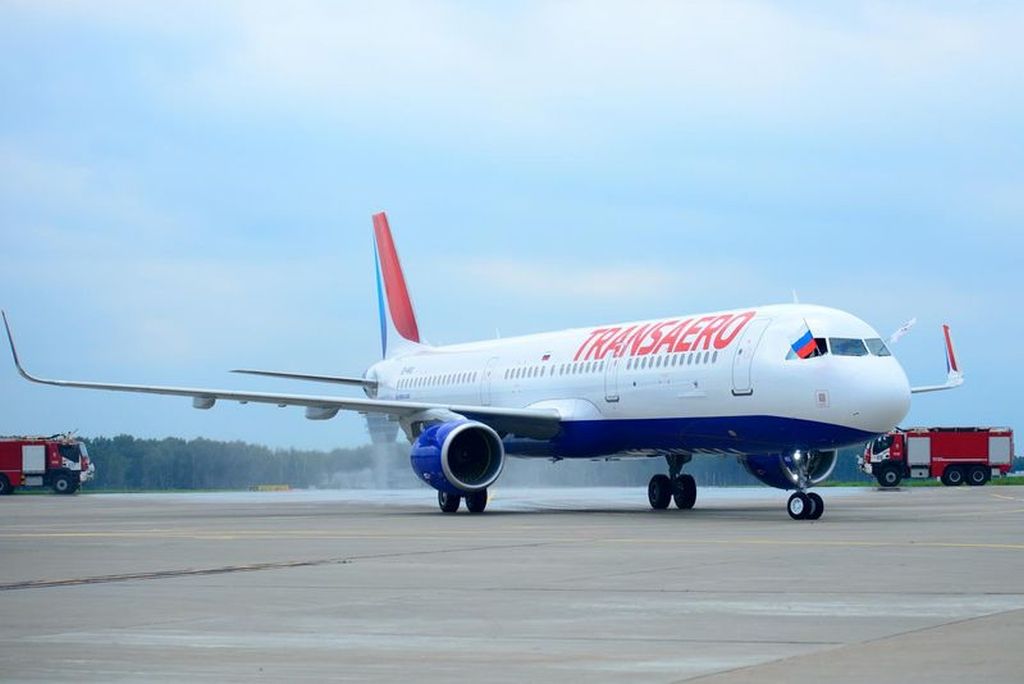
3 August 2015 Press Release
Transaero Airlines, Russia?s second largest airline, took delivery of its first Airbus A321 aircraft. The festive ceremony was held in Vnukovo international airport (Moscow) on the arrival of the A321 welcomed by the airline management, representatives of Vnukovo, Airbus and members of the media. The aircraft is delivered as part of Transaero?s contract with ICBC Leasing Company.
?Transaero?s A321, powered by CFM56 engines, features a two-class cabin layout seating 184 passengers (eight in business and 176 in economy ). The spacious configuration offers unbeatable passenger comfort in both classes. The airline plans to operate its A321 fleet on premium international routes.
Olga Pleshakova, CEO Transaero Airlines said, ?We are very pleased with this important step made towards further development of our cooperation with Airbus. I would like to express our sincere gratitude to the largest Chinese bank ? ICBC Bank and its subsidiary ICBC Leasing, who trust Transaero as a reliable partner, which is highlighted by the implementation of the signed contract. The addition of highly efficient aircraft to the company?s fleet will contribute to enhancing the company?s profitability, optimizing the airline?s passenger capacity, and will see withdrawal of aircraft, which are of low demand in the current market conditions.?
?"We are delighted to welcome Transaero, one of the leading Russian airlines, as a new Airbus operator. Transaero will undoubtedly benefit from the A321?s unbeatable operating costs and passenger comfort in all classes,?? said John Leahy, Chief Operating Officer, Customers.
Transaero Airlines launched services in November 1991, and currently serves more than 200 routes all over the world.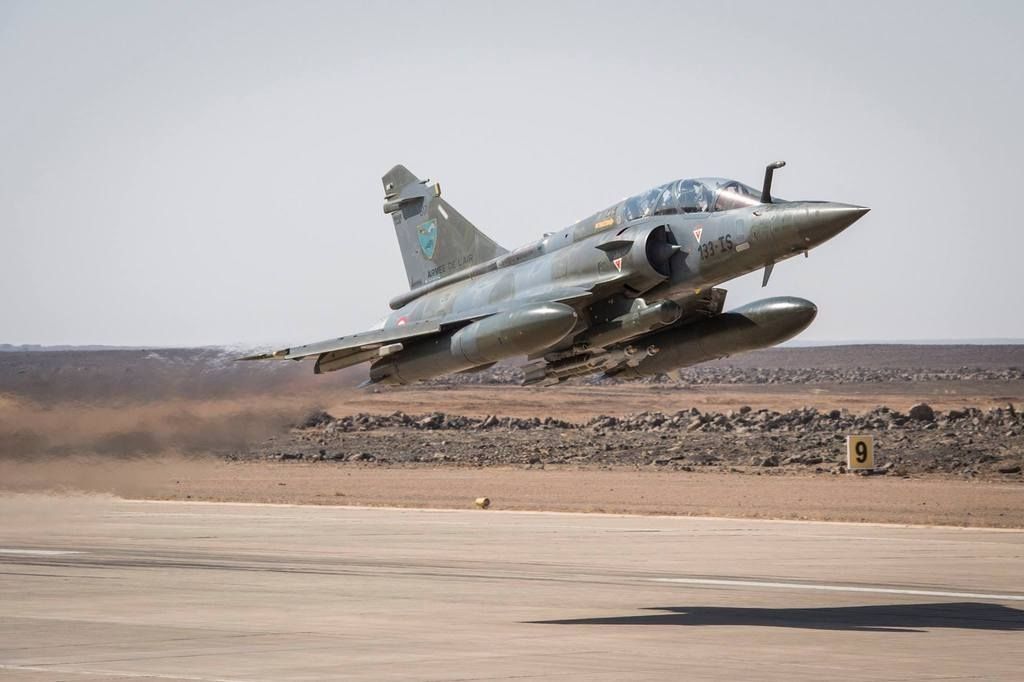
French Mirage 2000D take off from Jordan . Chammal force.
Cr?dits : ?tat-major des arm?es / Arm?e de l'air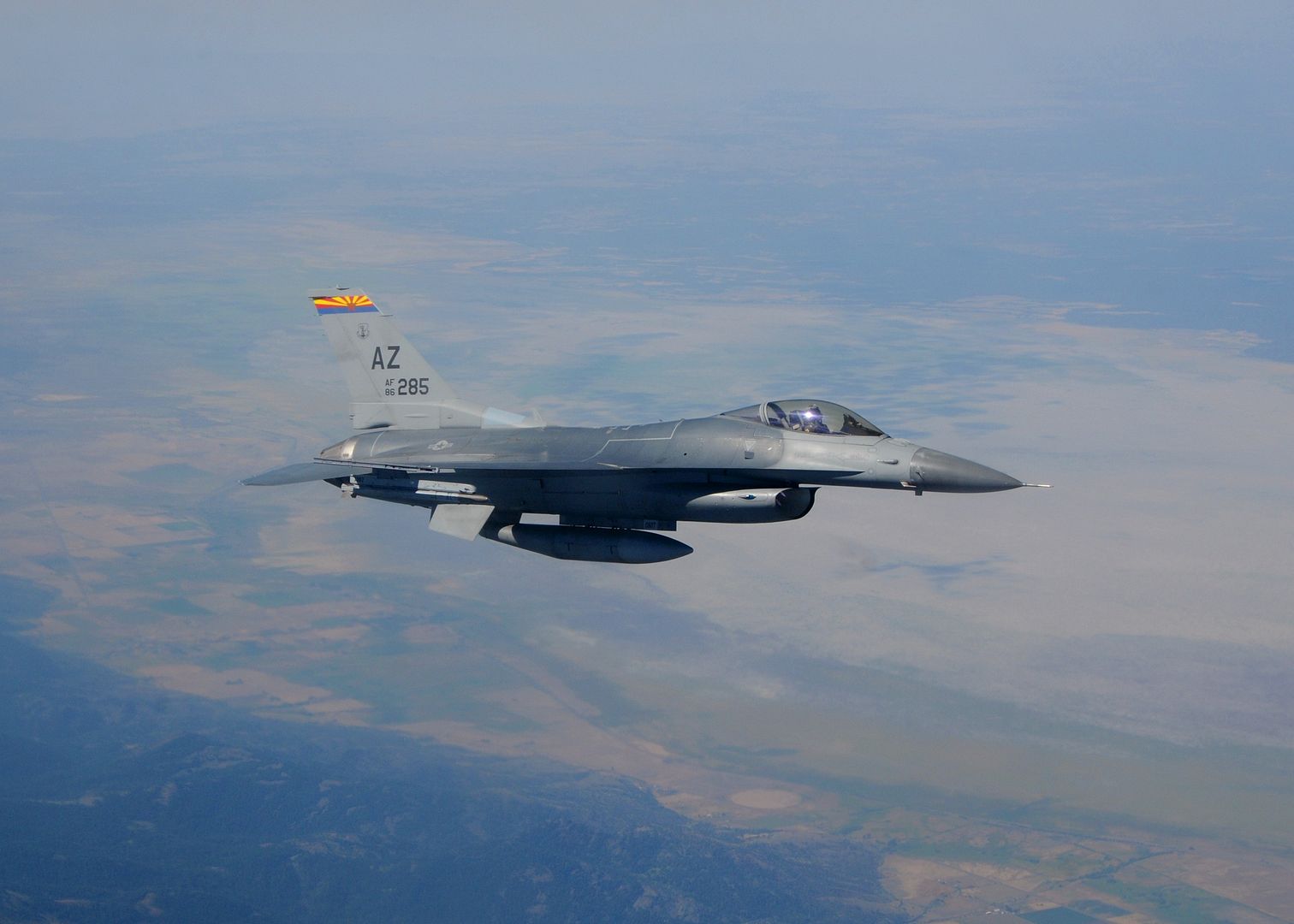
An Arizona Air National Guard F-16 approaches a KC-135,141st Air Refueling Wing, to refuel during the Sentry Eagle exercise at Klamath Falls, Ore., July 31, 2015. This year Sentry Eagle is featuring F-15s, F-16s, F-18s and KC-135s during the Air National Guard's largest air-to-air training exercise. (U.S. Air National Guard photo by Senior Airman Penny Snoozy/Released)
South Carolina Air National Guard F-16's wait at the wing of a KC-135,141st Air Refueling Wing, to refuel during the Sentry Eagle exercise at Klamath Falls, Ore., July 31, 2015. This year Sentry Eagle is featuring F-15s, F-16s, F-18s and KC-135s during the Air National Guard's largest air-to-air training exercise. (U.S. Air National Guard photo by Senior Airman Penny Snoozy/Released) -
10 years ago
 Main Admin
Main Admin -
10 years agoThu Aug 06 2015, 04:34pm
 Main Admin8/4/2015 - An F-22A Raptor from the 95th Fighter Squadron stationed with the 325th Fighter Wing, Tyndall Air Force Base, Florida, prepares to refuel from a KC-135 Stratotanker from the 93rd Air Refueling Squadron from Fairchild AFB, Washington, during Red Flag 15-3 at Nellis AFB, Nev., July 31, 2015. Flying units from around the Department of Defense deploy to Nellis AFB to participate in Red Flag exercises that are typically held three times a year and organized by the 414th Combat Training Squadron. (U.S. Air Force photo's by Senior Airman Brittany A. Chase)
Main Admin8/4/2015 - An F-22A Raptor from the 95th Fighter Squadron stationed with the 325th Fighter Wing, Tyndall Air Force Base, Florida, prepares to refuel from a KC-135 Stratotanker from the 93rd Air Refueling Squadron from Fairchild AFB, Washington, during Red Flag 15-3 at Nellis AFB, Nev., July 31, 2015. Flying units from around the Department of Defense deploy to Nellis AFB to participate in Red Flag exercises that are typically held three times a year and organized by the 414th Combat Training Squadron. (U.S. Air Force photo's by Senior Airman Brittany A. Chase)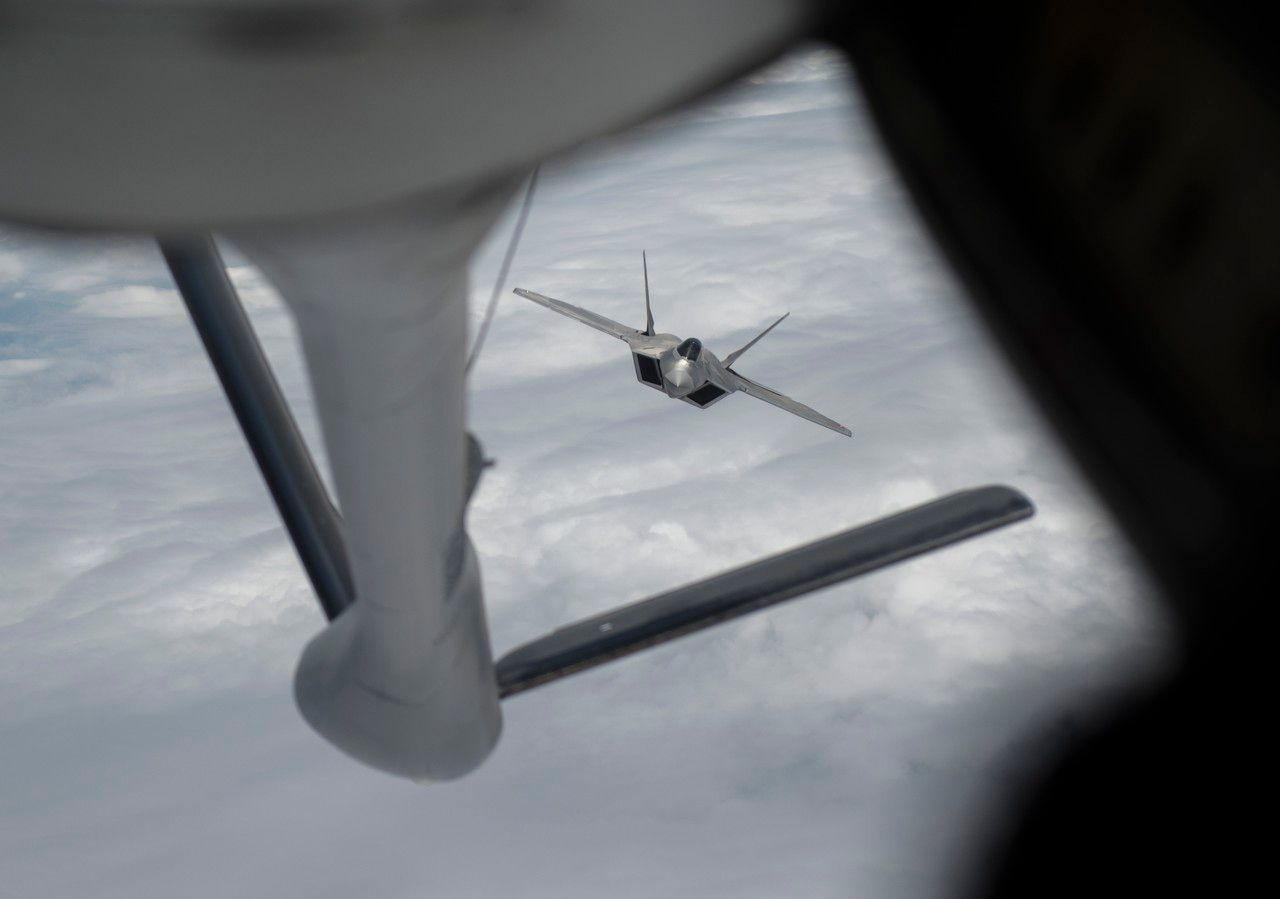
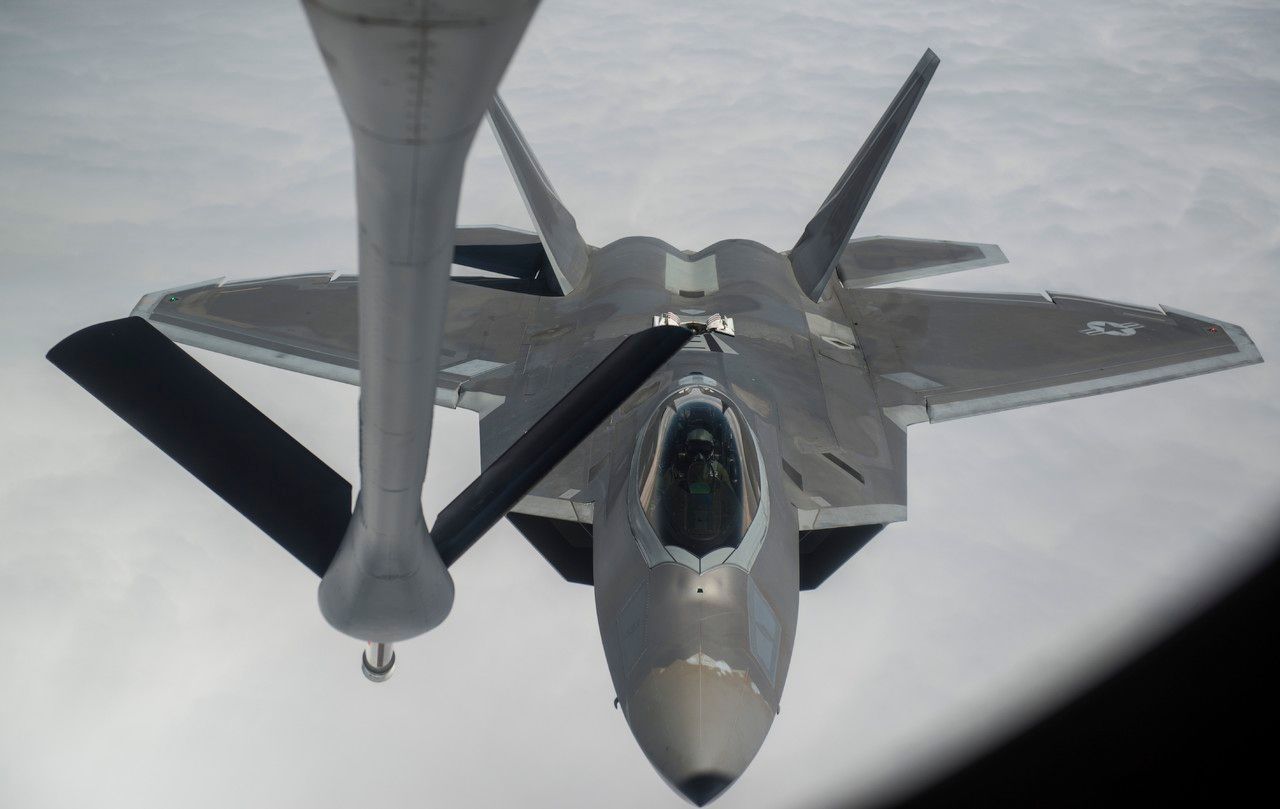
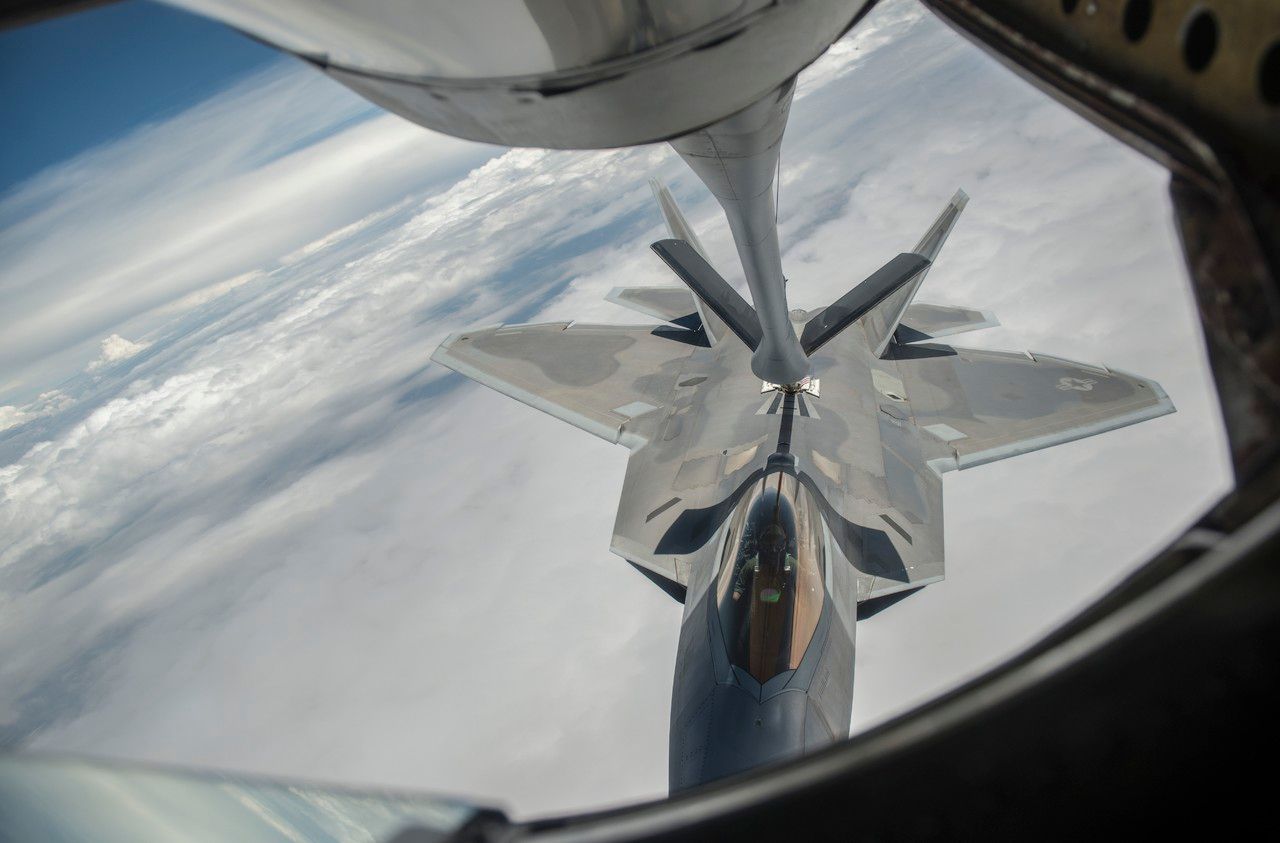
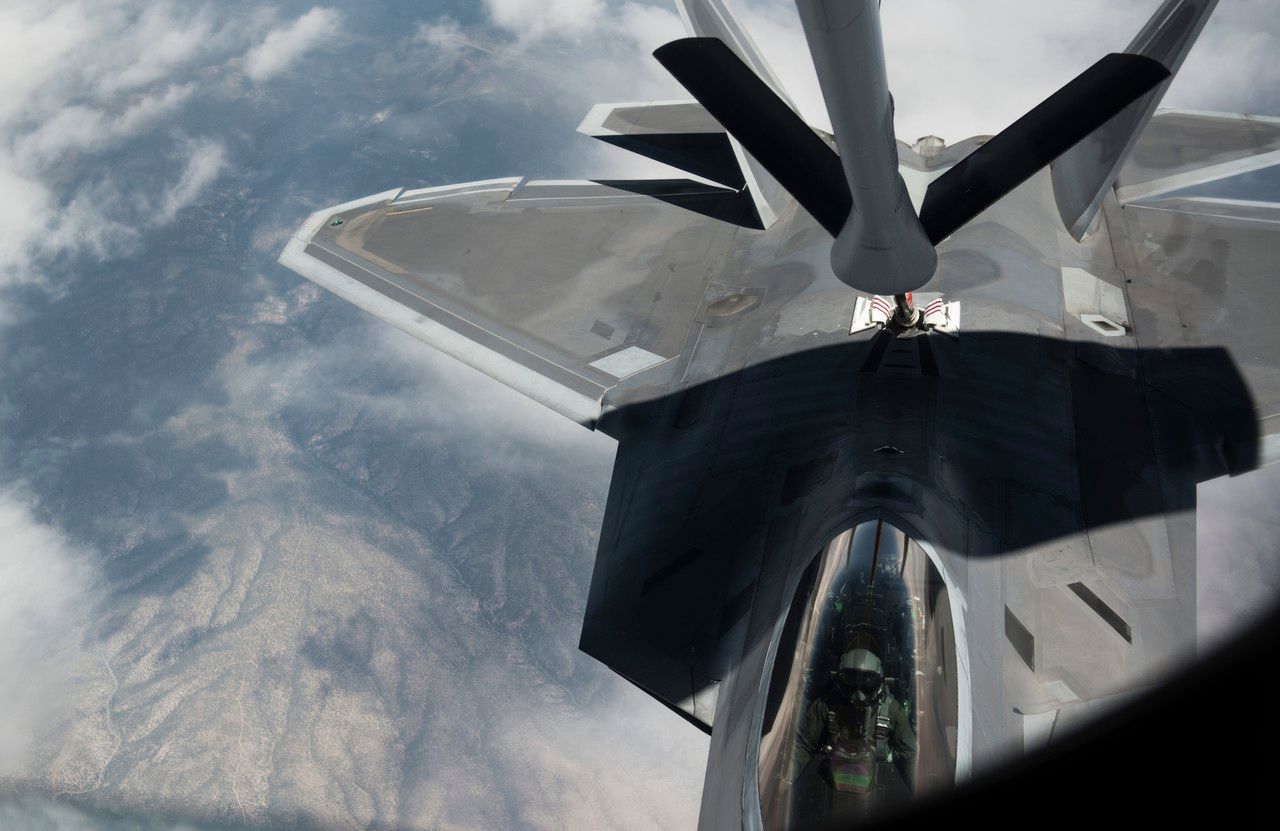
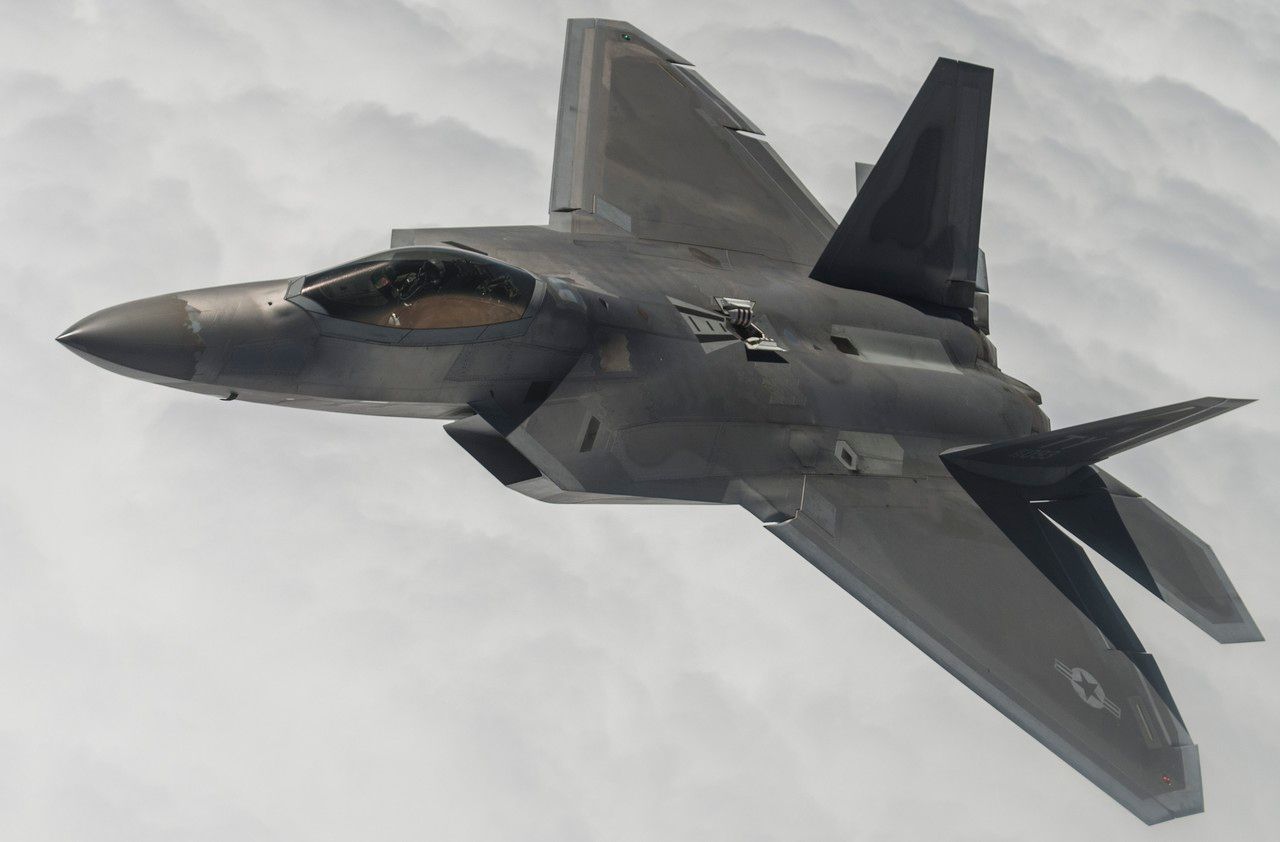
PACIFIC OCEAN (Aug 4, 2015) An AV-8B Harrier, attached to the ?Blacksheep? of Marine Attack Squadron (VMA) 214, sits on the flight deck of the amphibious assault ship USS Boxer (LHD 4) during flight operations. Boxer is currently underway conducting routine training exercises and maintenance in preparation for its upcoming deployment. (U.S. Navy photo by Mass Communication Specialist 3rd Class Jesse Monford/Released)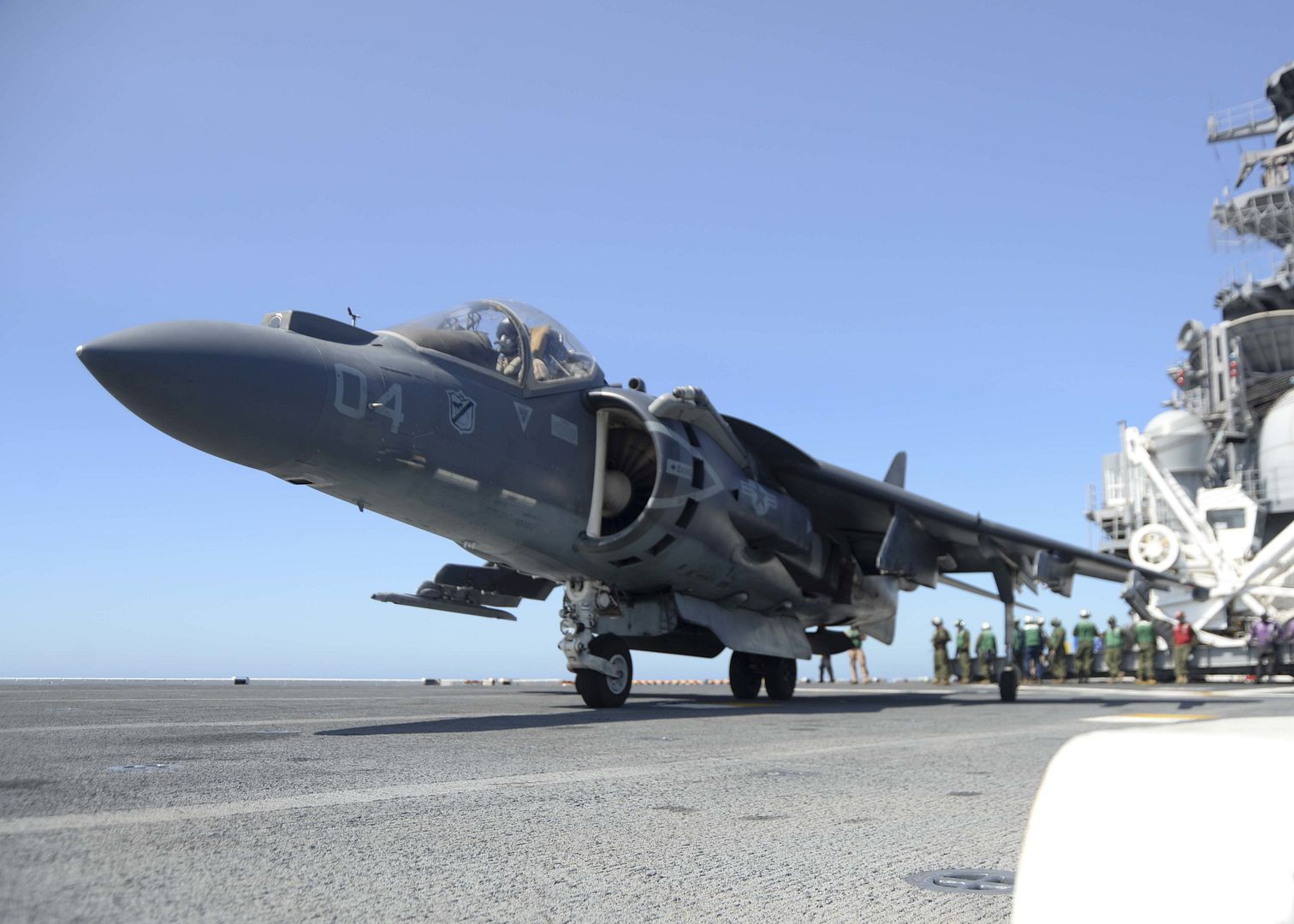
Post a reply
- Go to Next topic
- Go to Welcome
- Go to Introduce Yourself
- Go to General Discussion
- Go to Screenshots, Images and Videos
- Go to Off topic
- Go to Works in Progress
- Go to Skinning Tips / Tutorials
- Go to Skin Requests
- Go to IJAAF Library
- Go to Luftwaffe Library
- Go to RAF Library
- Go to USAAF / USN Library
- Go to Misc Library
- Go to The Ops Room
- Go to Made in Germany
- Go to Campaigns and Missions
- Go to Works in Progress
- Go to Juri's Air-Raid Shelter
- Go to Campaigns and Missions
- Go to Works in Progress
- Go to Skinpacks
- Go to External Projects Discussion
- Go to Books & Resources
